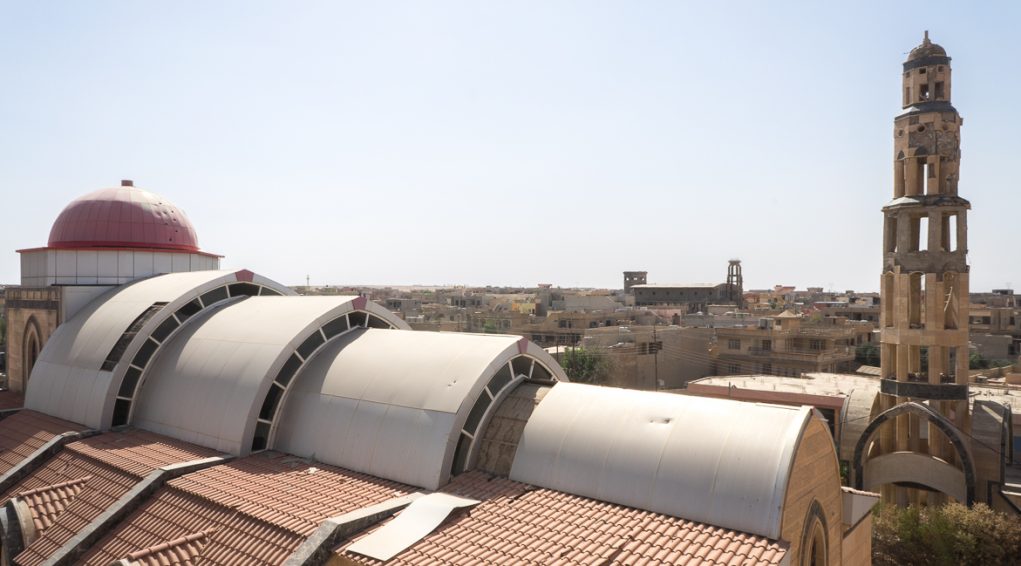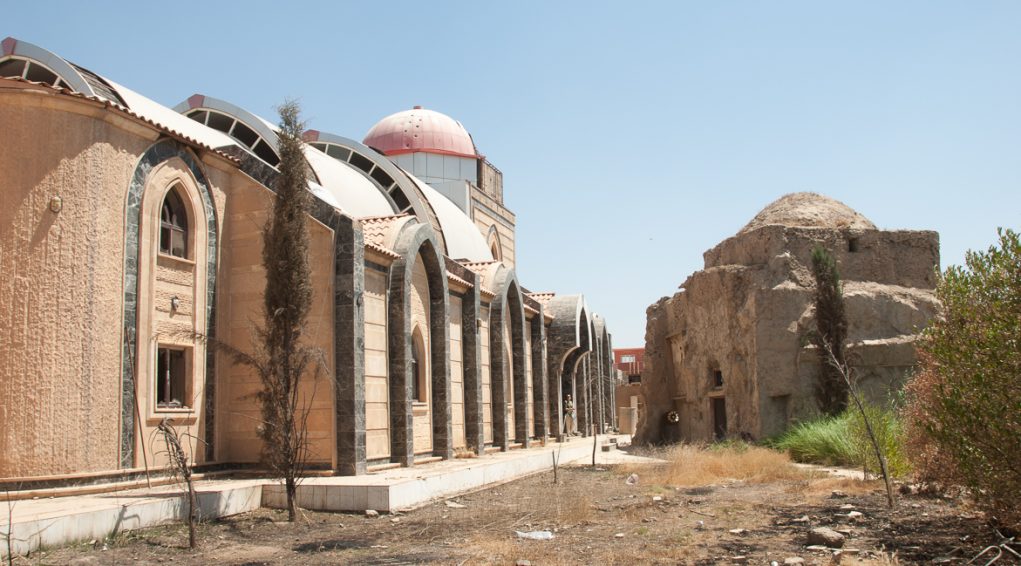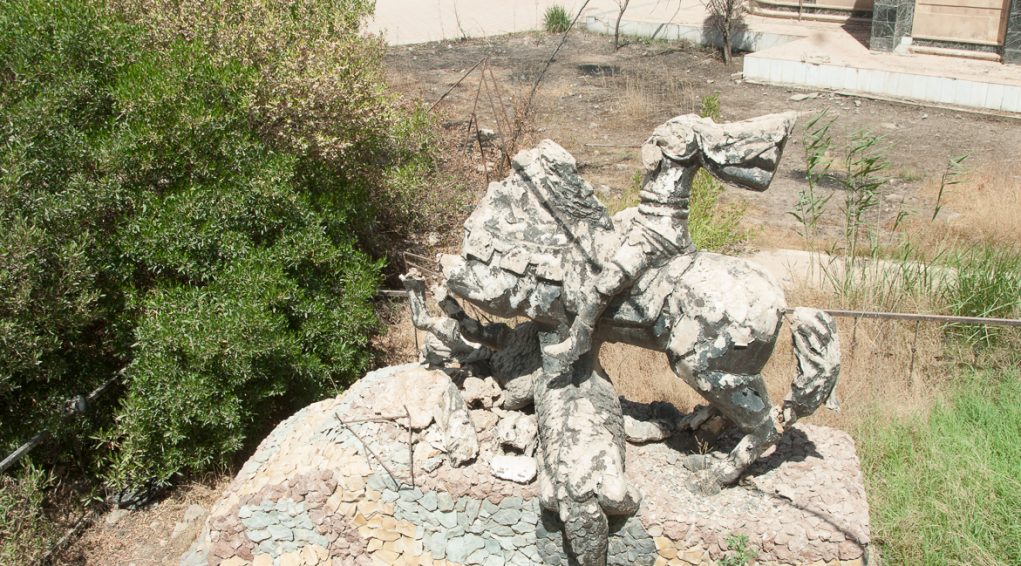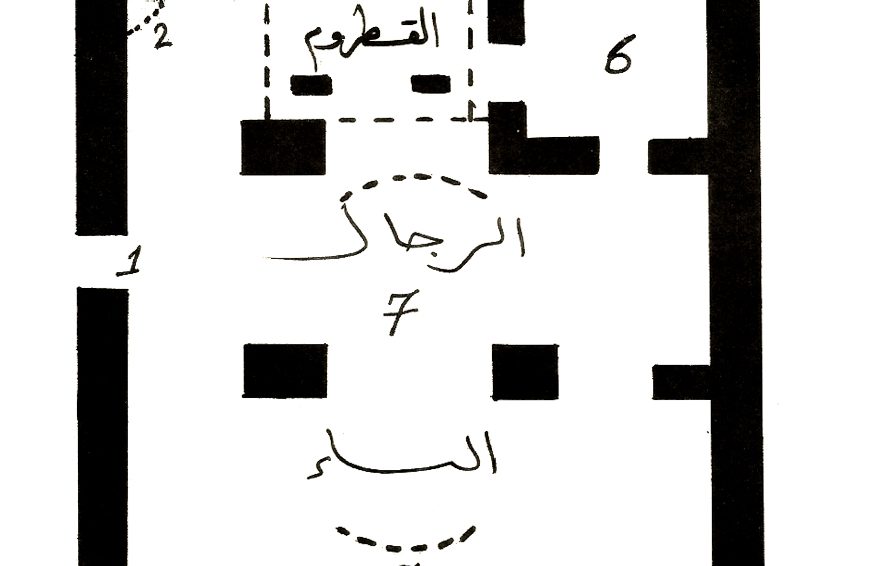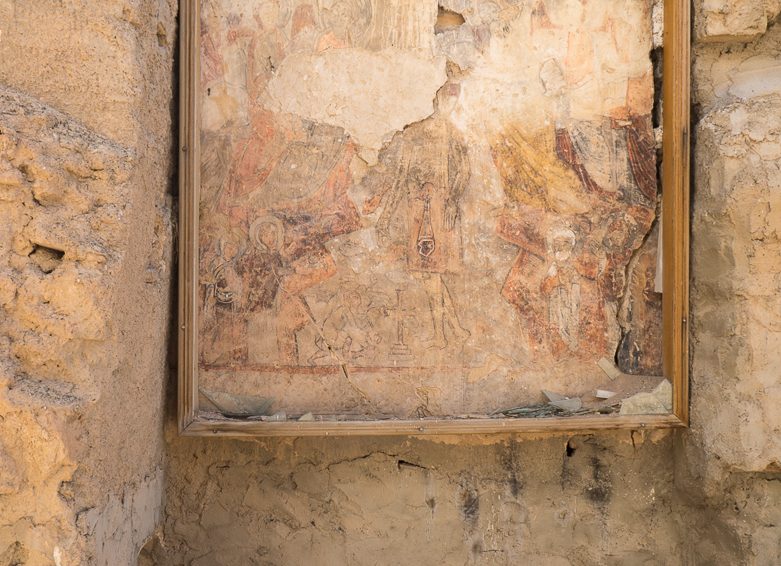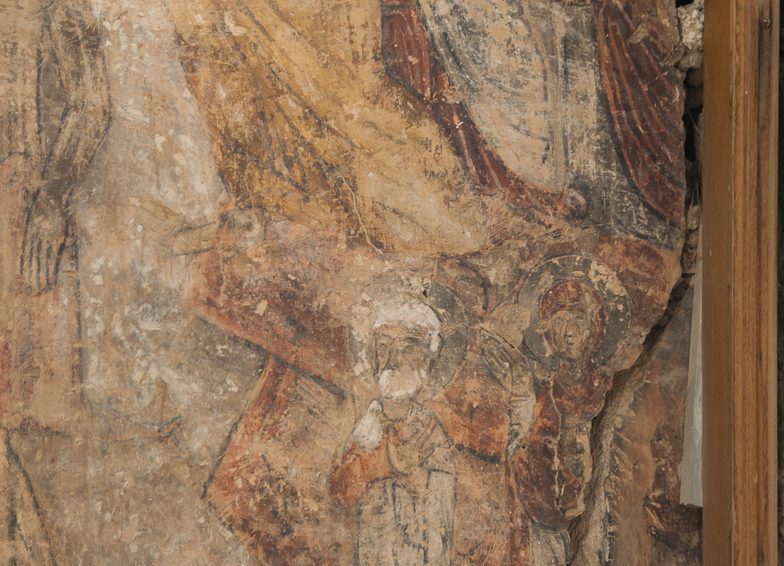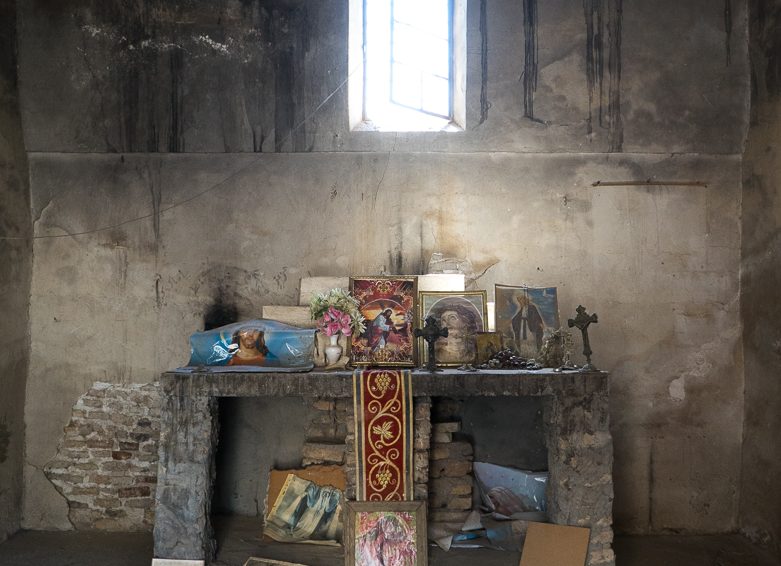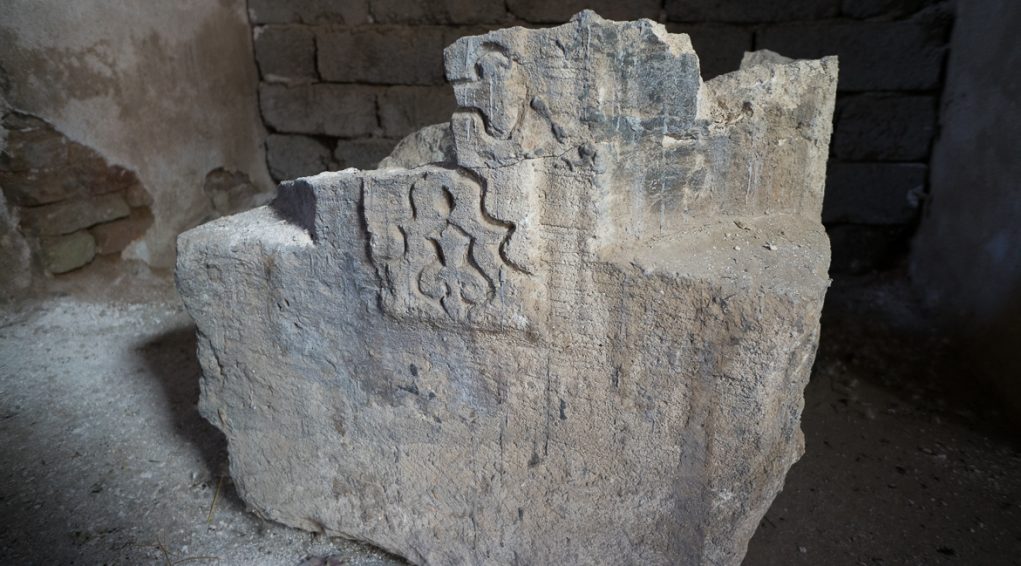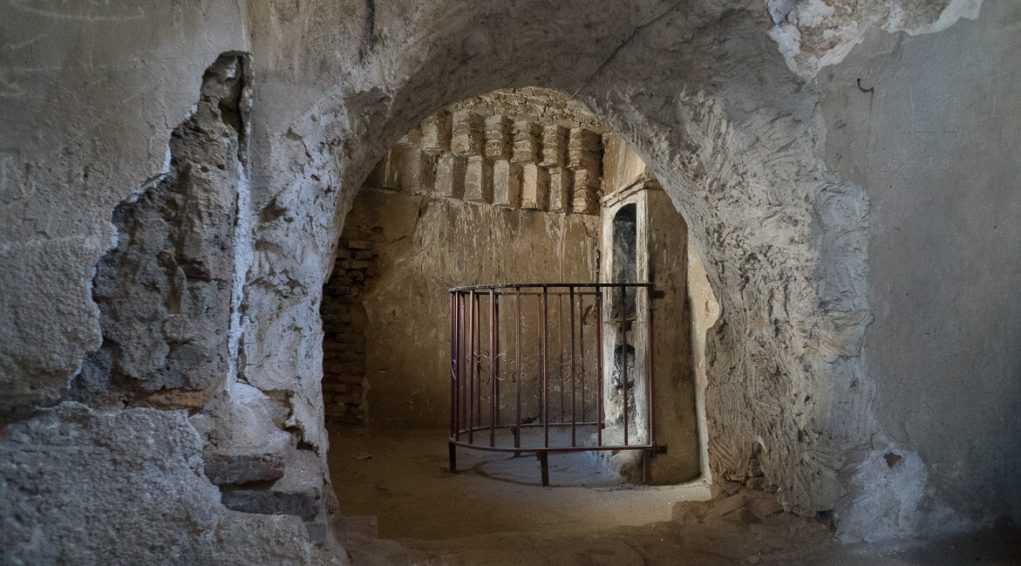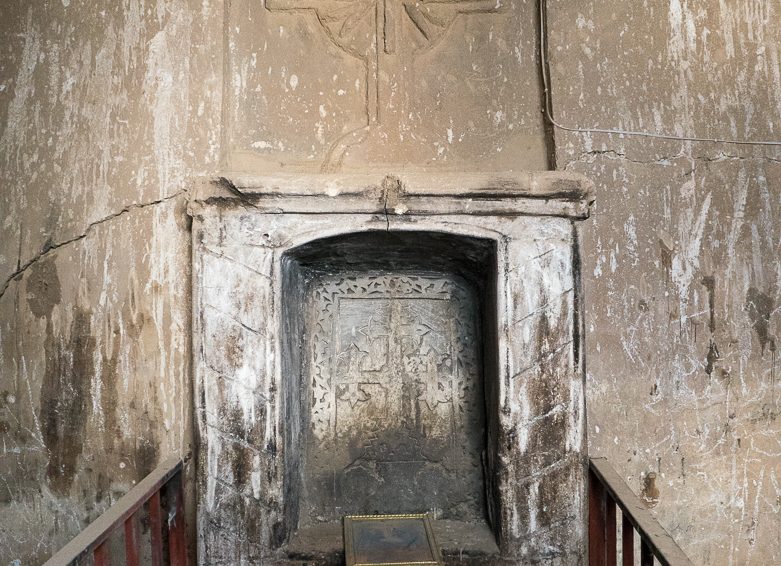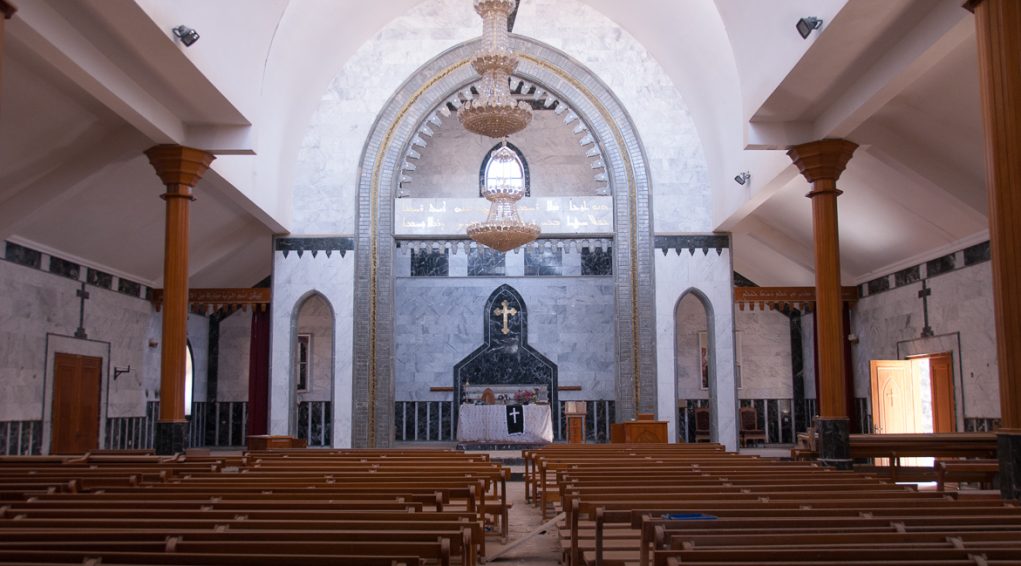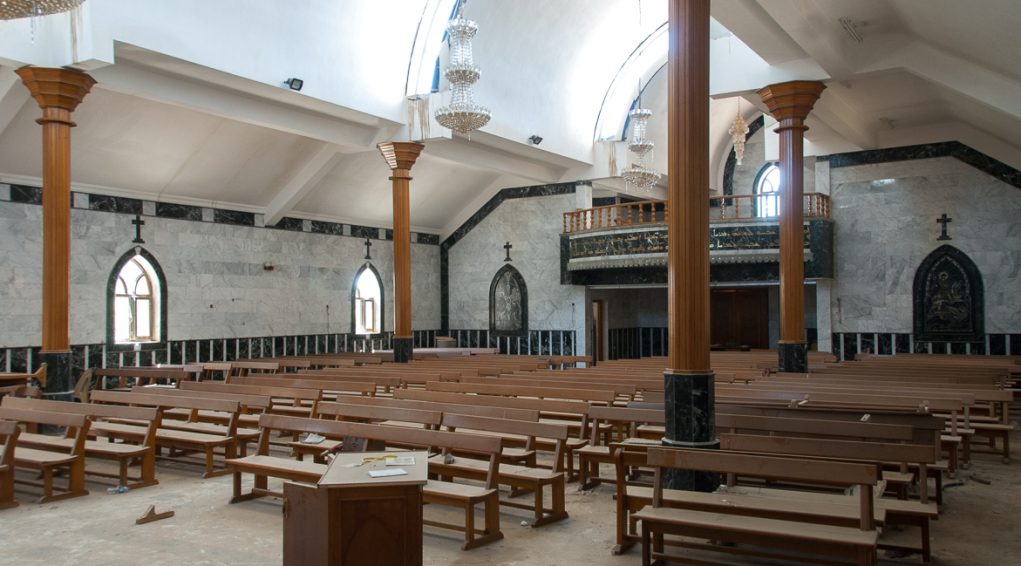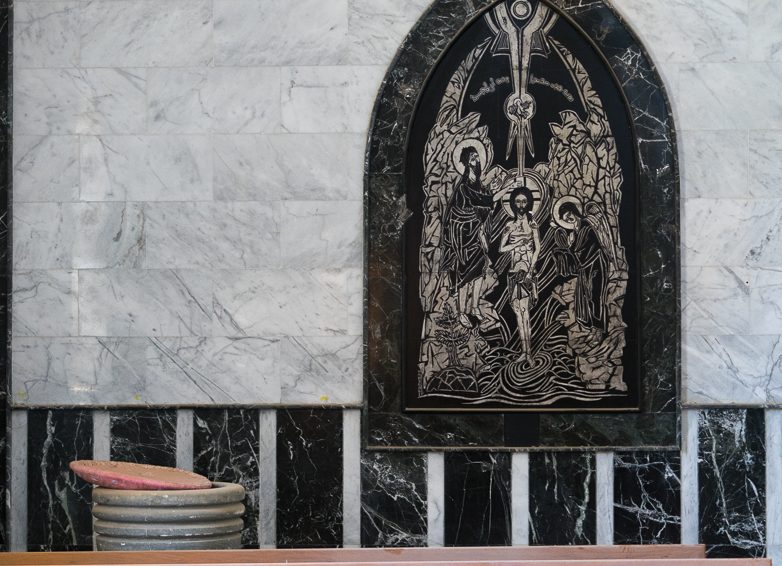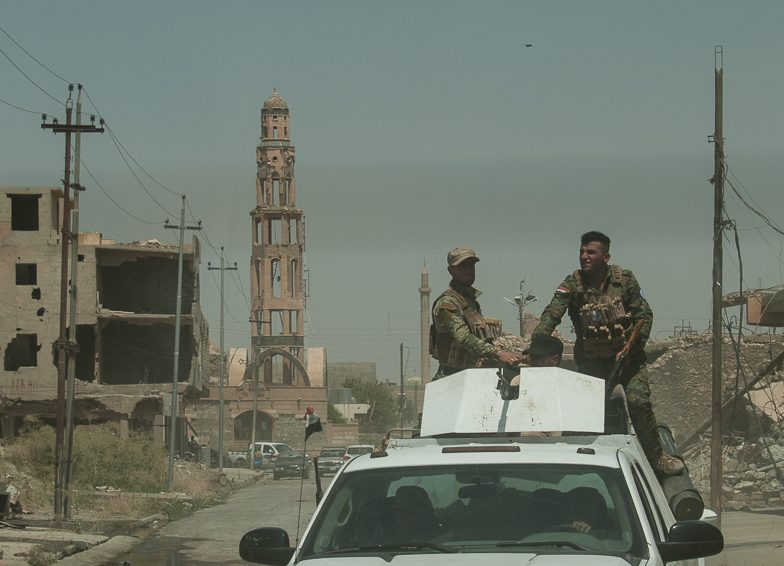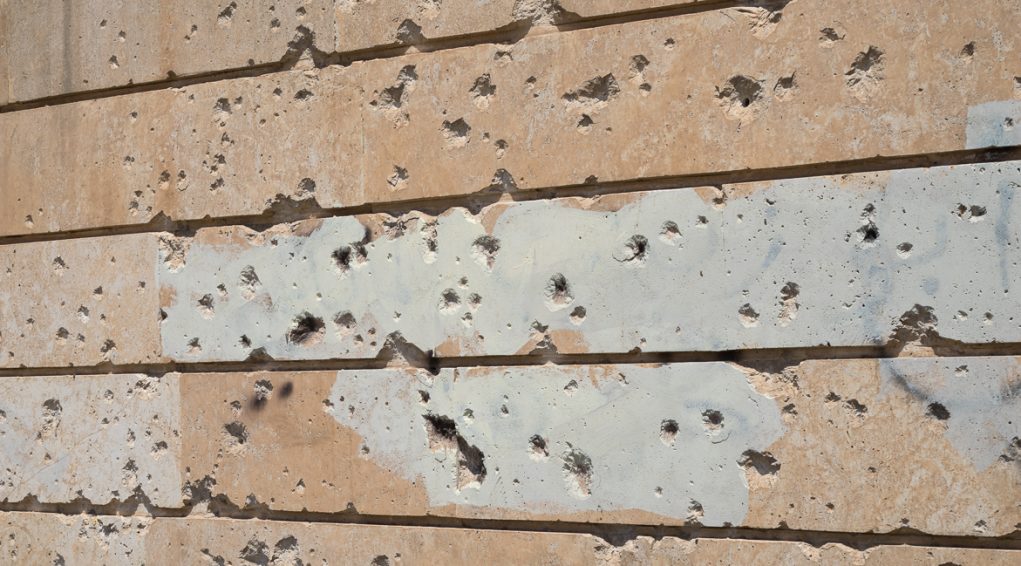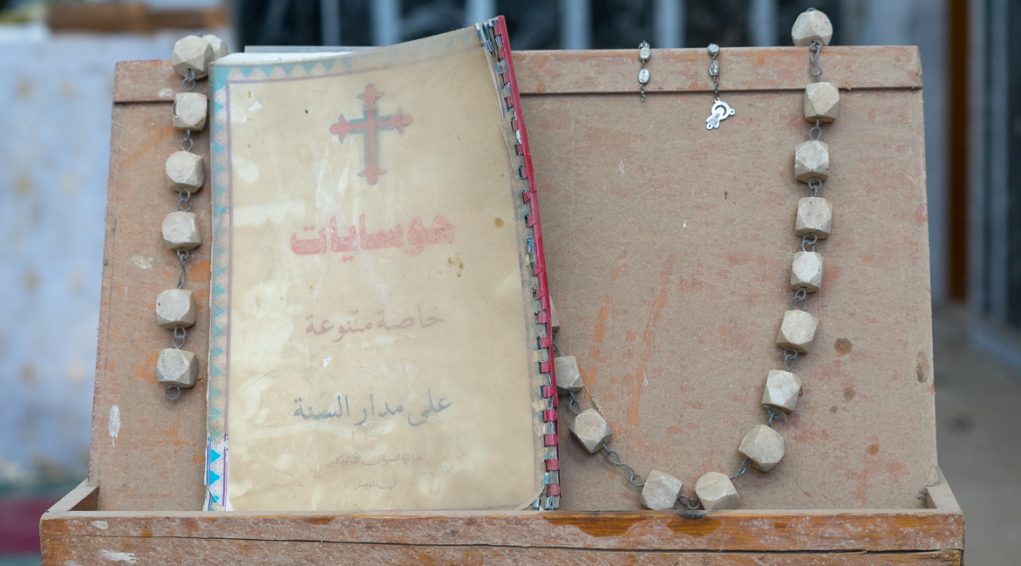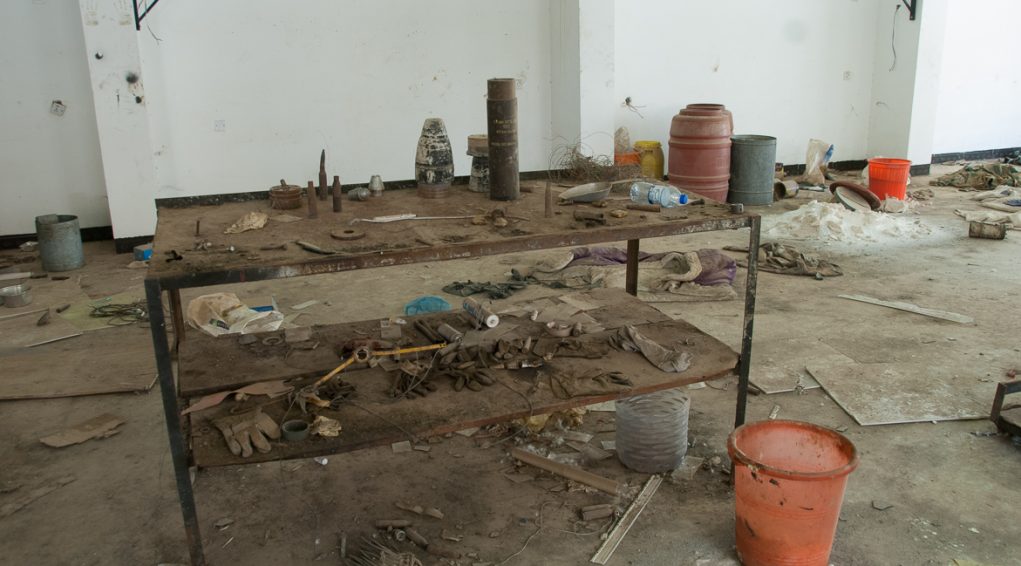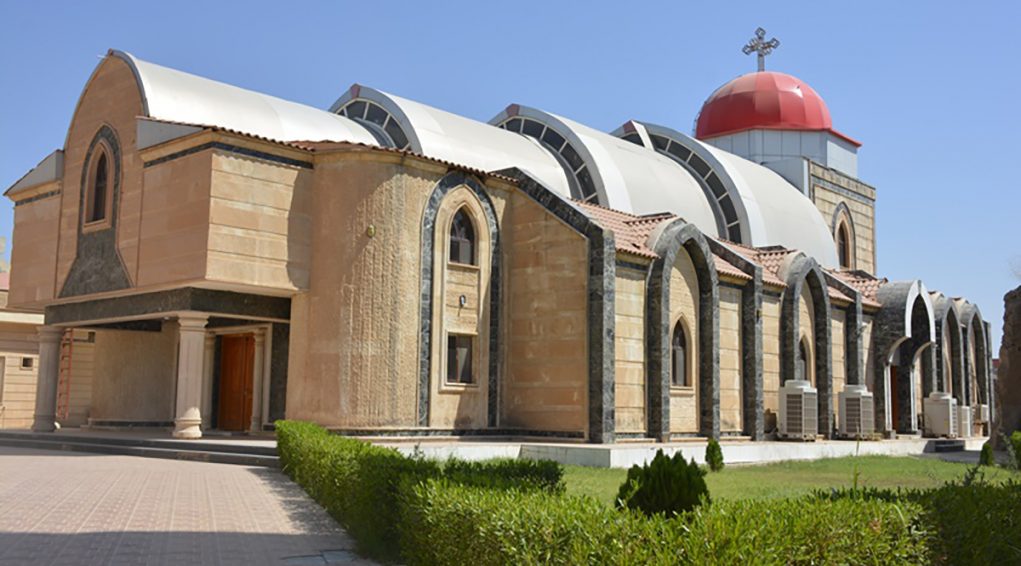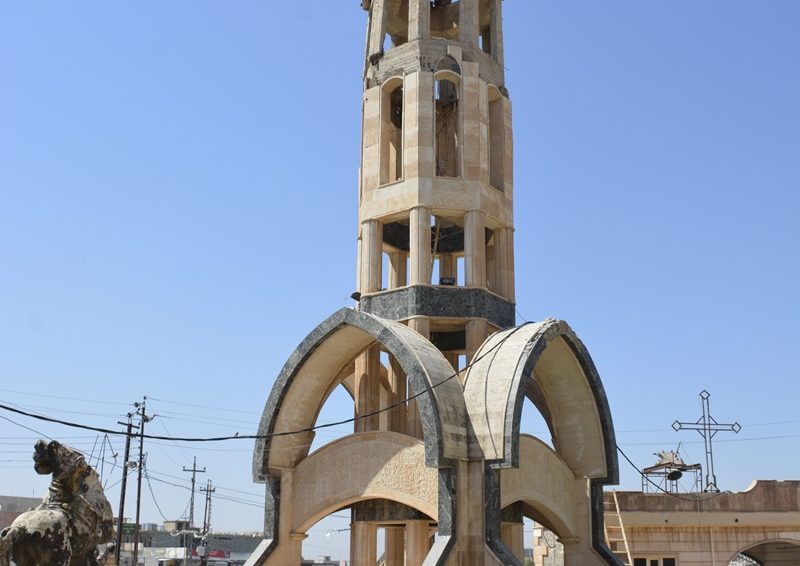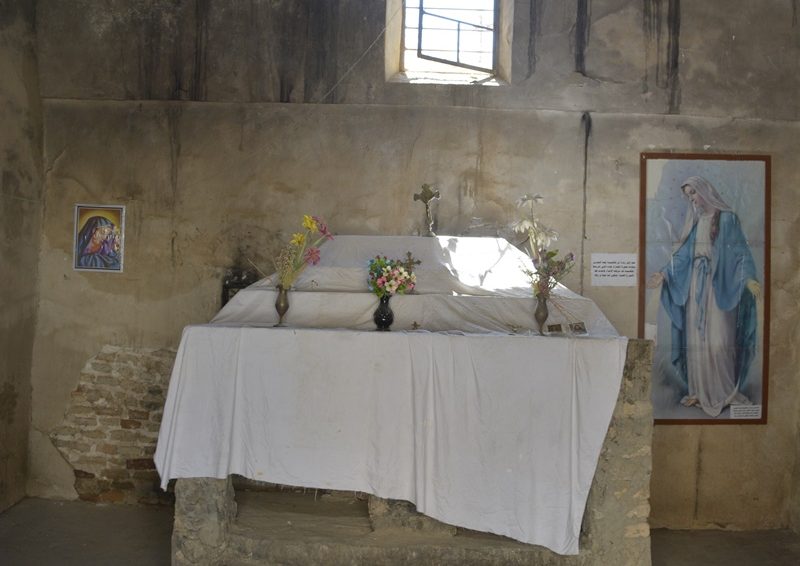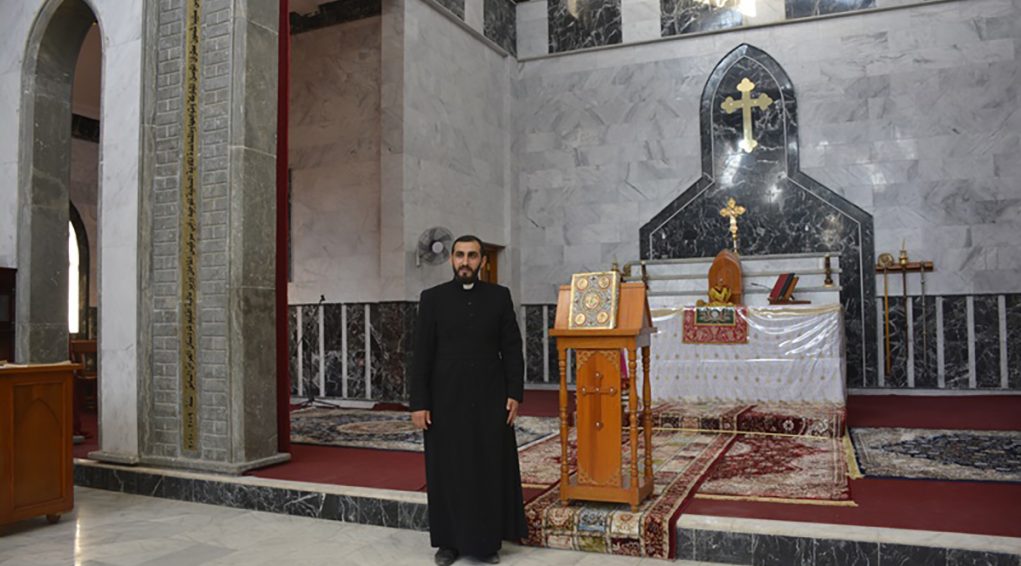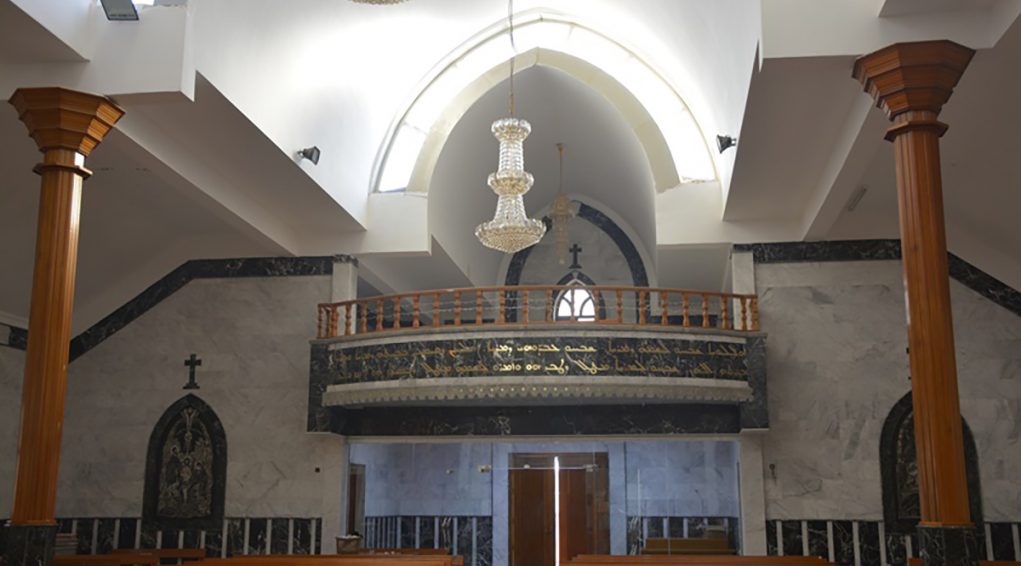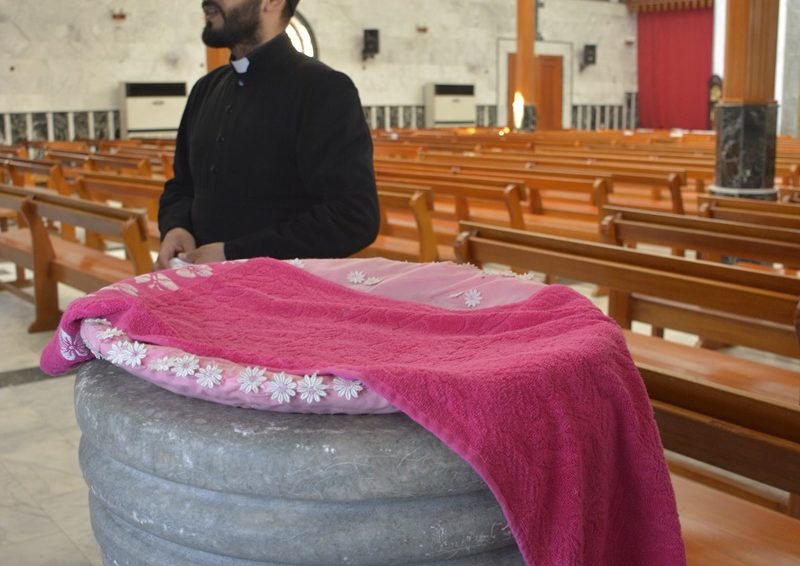Mar Gorgis Church in Baghdede (Qaraqosh)
Mar Gorgis church in Baghdede (Qaraqoqh) lies 36°15’56.73″N 43°22’42.57″E and 272 meters high. The ancient Mar Gorgis church has supposedly been founded in the 6th century.
Its existence is mentioned in a rogations prayer book from 1270.


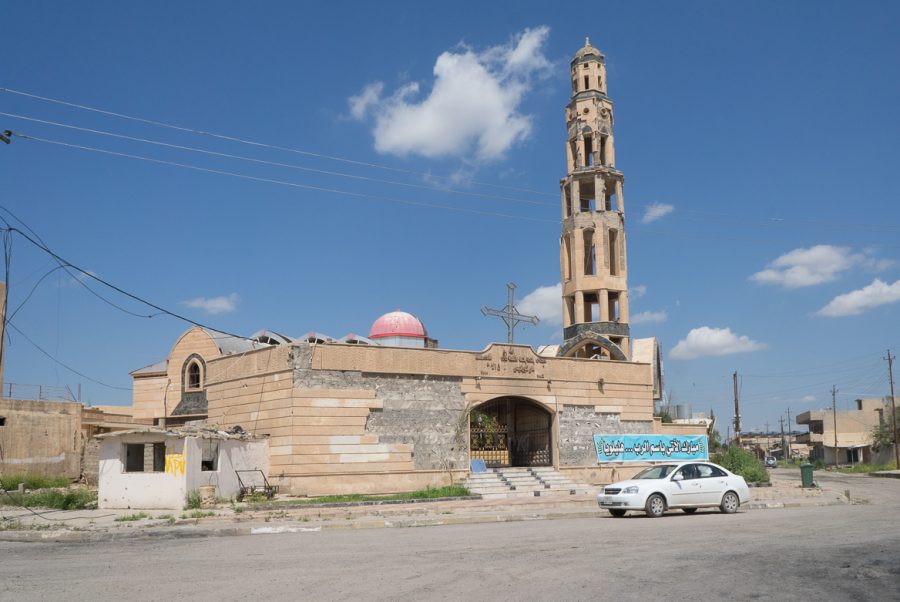
The Syriac-Orthodox Mar Gorgis church in Baghdede (Qaraqosh) is made of two churches, the ancient and the modern church. The first one is undersized and rupestrian. The second one is massive and surmounted by tiered iron domes.
Whereas the first one stands there as a testimony of bygone days, the second one is an ode to modernity. Both are however very close to one another, almost attached to each other, as if they were bridging the gap between the past and the present.
Mar Gorgis church in Baghdede. Plan of the modern church.
1982 © Suhayll Qasha in “Bakhdeda Churches”
Location
Mar Gorgis Church in Baghdede (Qaraqosh) lies 36°15’56.73″N 43°22’42.57″E and 272 meters high.
30 km south of Mosul and 80 km west of Arbil, Baghdede is the biggest Christian city in the Nineveh plain, also known as the Syriacs’ plain in religious anthropology.
Far from weakening the city’s influence, the destructions and profanations committed by ISIS’ jihadists between August 7th 2014 and October 22nd 2016 have emphasised it with force and conviction.
Mar Gorgis sits southwest of the city, along the road leading to the great Mar Benham and Mart Sarah Monastery.
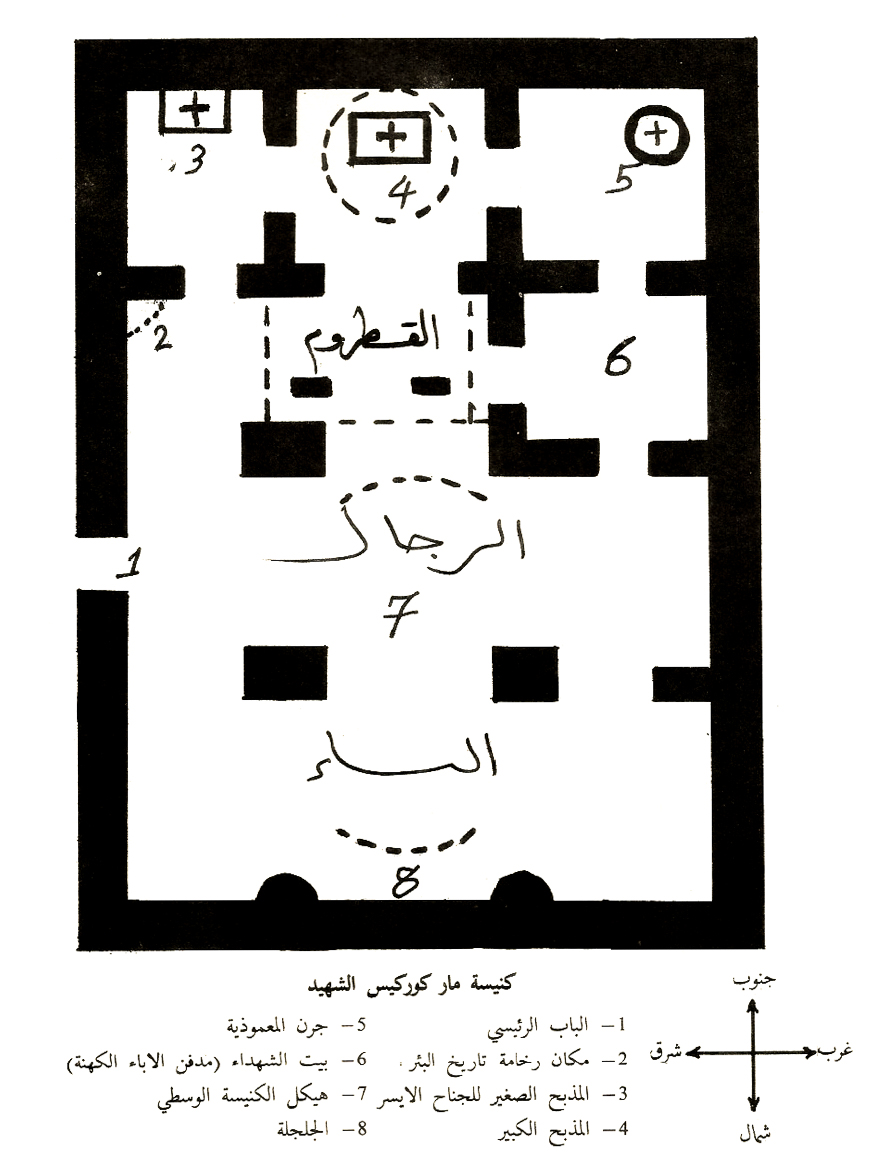
1982 © Suhayll Qasha in "Bakhdeda Churches"
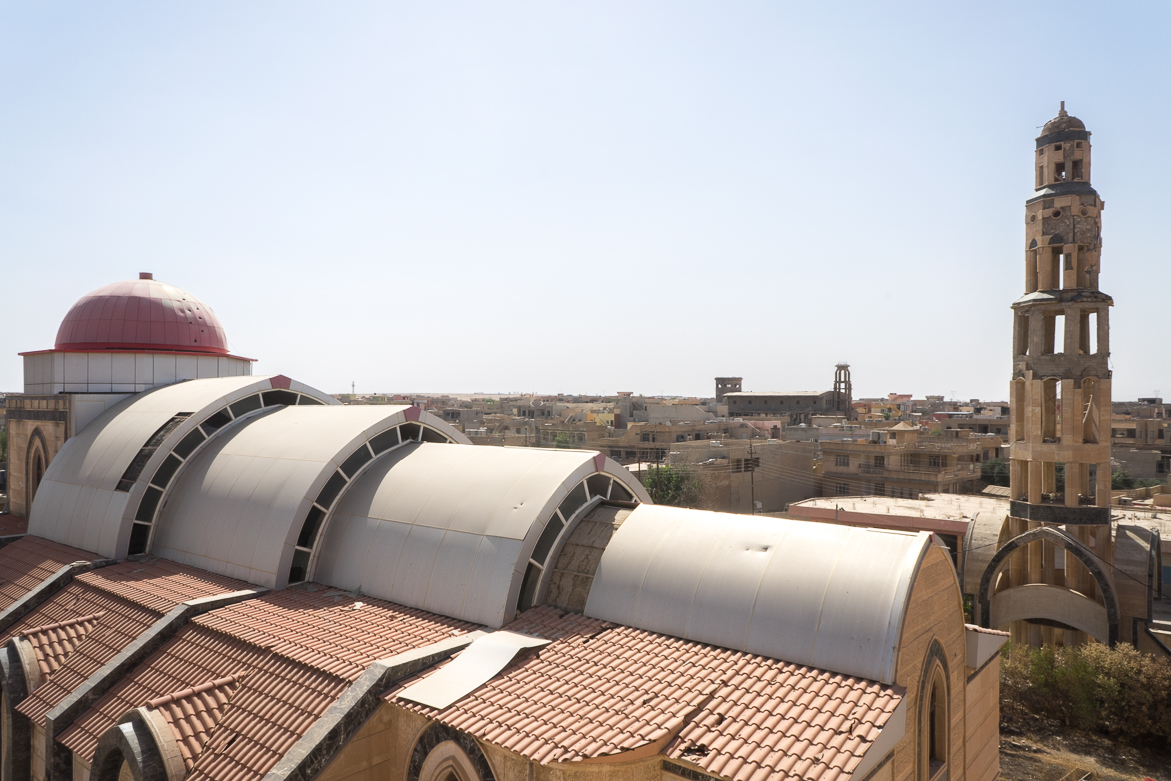
June 2017 © Pascal Maguesyan / MESOPOTAMIA
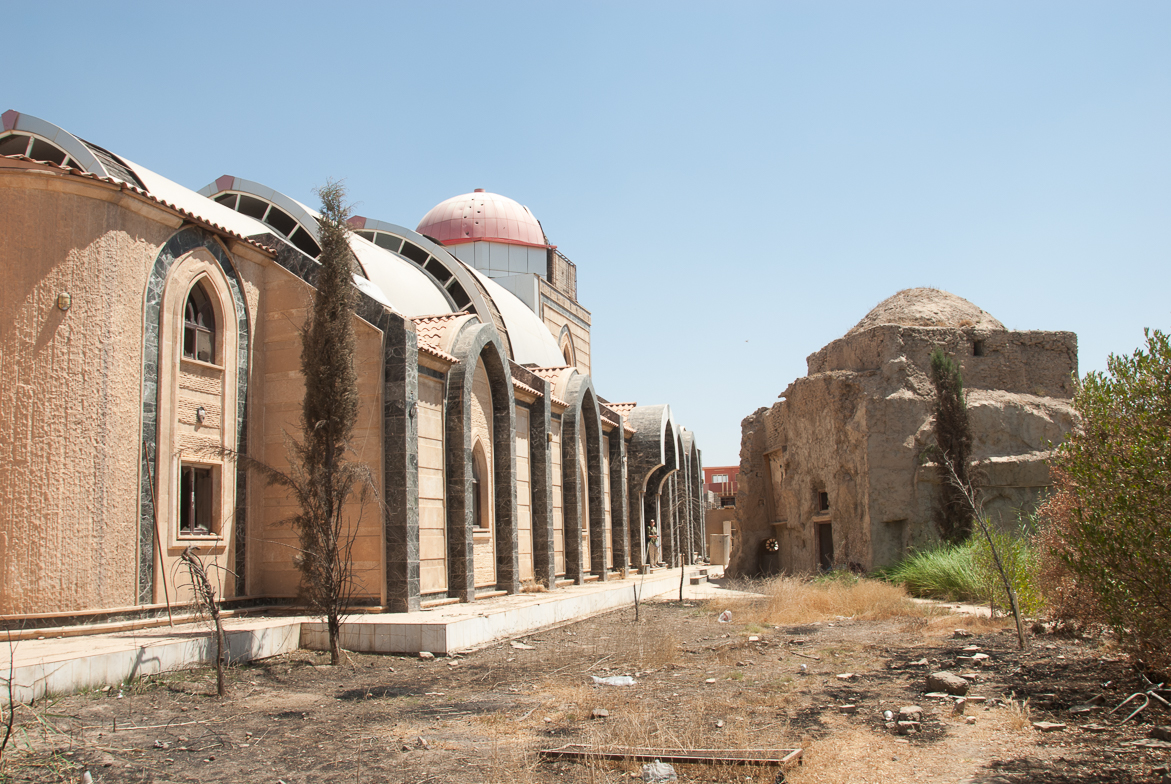
June 2017 © Pascal Maguesyan / MESOPOTAMIA
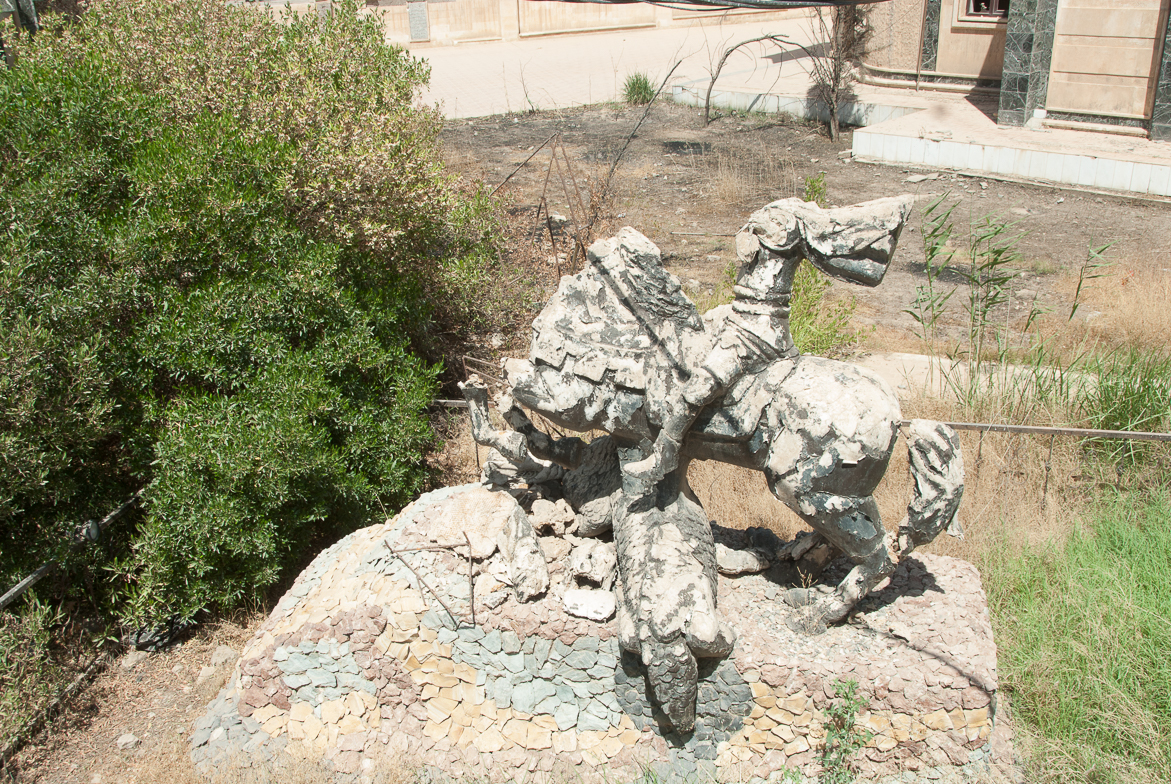
June 2017 © Pascal Maguesyan / MESOPOTAMIA

1982 © Suhayll Qasha in "Bakhdeda Churches"

June 2017 © Pascal Maguesyan / MESOPOTAMIA

June 2017 © Pascal Maguesyan / MESOPOTAMIA

June 2017 © Pascal Maguesyan / MESOPOTAMIA

1982 © Suhayll Qasha in "Bakhdeda Churches"
Fragments of history
Qaraqosh, in its original Syriac name Baghdede (Baghdeda), probably turned to Christianity in the 7th century – some even appeal for late 4th century – and became a major centre for the Syriac-Orthodoc Church before embracing Roman Catholicism in the 18th century.
It is this Orthodox saga that ran over centuries that Mar Gorgis church in Baghdede still represents today.
The ancient church could date from the 6th century. The only source that mentions it is the Bishop Paulos Benham in his work from 1949 about Jacobite (Syriac-Orthodox) churches in Baghdede[1]. The existence of the church is also stated in a rogations prayer book from 1270.
When Roman Catholicism started to settle on a long-term basis throughout the Nineveh plain, and more particularly in Baghdede in the 18th century, the Syriacs obtained in 1768 “the right to raise an altar in the B. Sohde in Mār Guōrguĩs Church[2]. »
Restored in 1866, the massive dimensions of the church were still to be seen in the 20th century, in the 1970’s, but they do not have much to do with what is left of it nowadays. The ancient Mar Gorgis church, made of brick and earth has been placed in a case of cement and strengthened with reinforced concrete, and is now reduced to a minimum since the building of the modern church.
Funny little “pocket” church, with its suite of three successive shrines, it offers poor vestiges which suggest a glorious heritage much more than they actually reveal it.
When Jean-Maurice Fiey visited Mar Gorgis church in the last century, it still contained two commemorative plaques: one related the big plague that affected Baghdede in 1773 and killed “almost all the population[3]”, 4 000 people died, among which 52 priests and deacons. The other plate related the digging of a well in Baghdede in 1739.
[1] In Assyrie Chrétienne, p.458, Jean-Maurice Fiey
[2] Id. p.445
[3] Qaraqoche ou la disparition des chrétiens de la plaine de Ninive, Christian Lochon, Revue de l’Œuvre d’Orient.
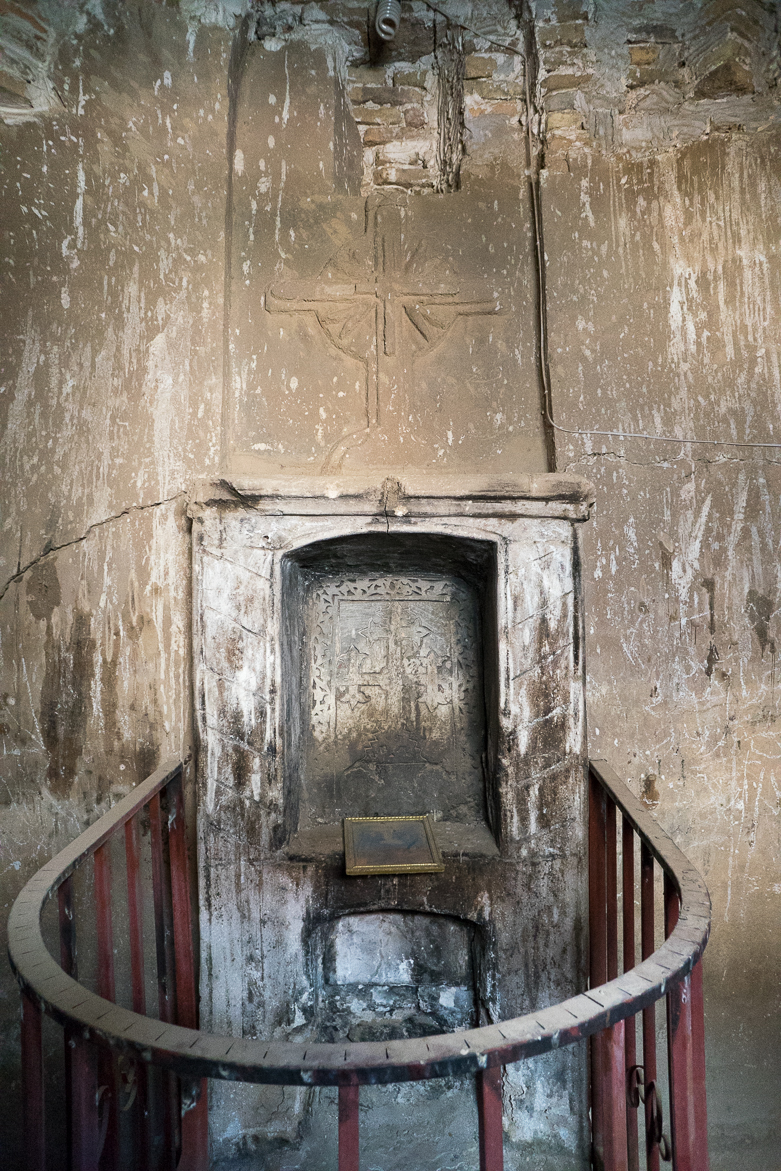
June 2017 © Pascal Maguesyan / MESOPOTAMIA
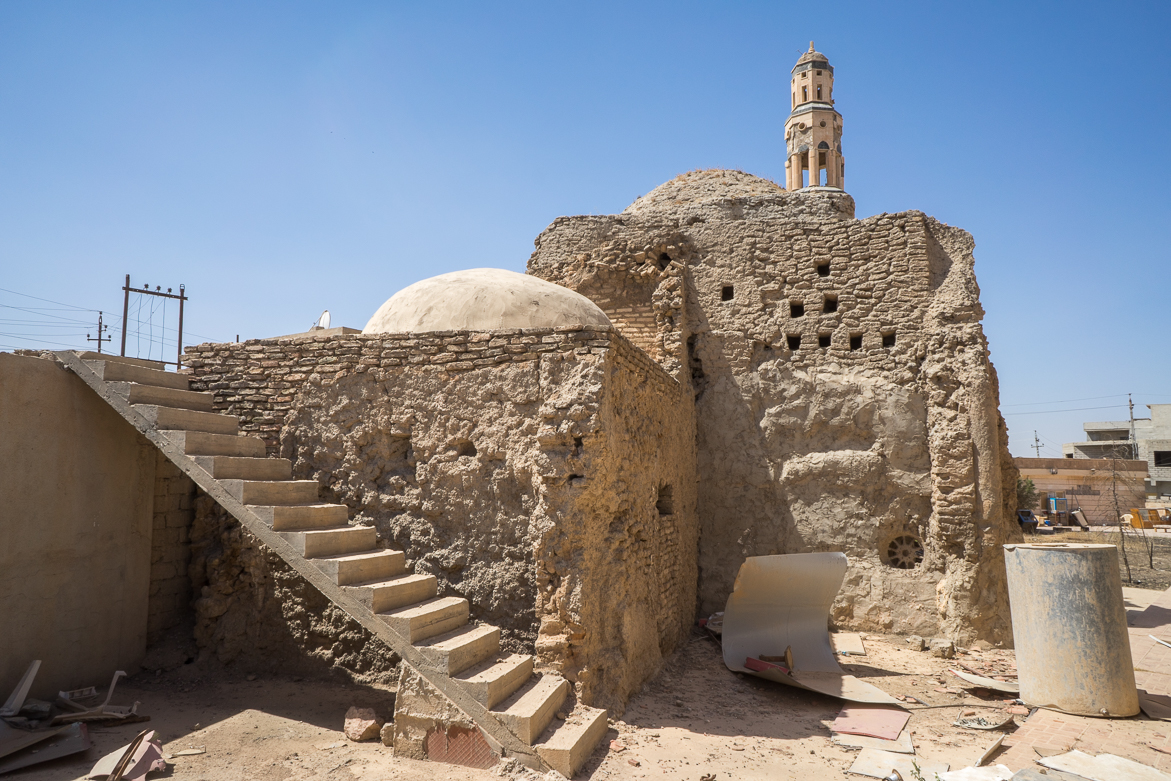
June 2017 © Pascal Maguesyan / MESOPOTAMIA
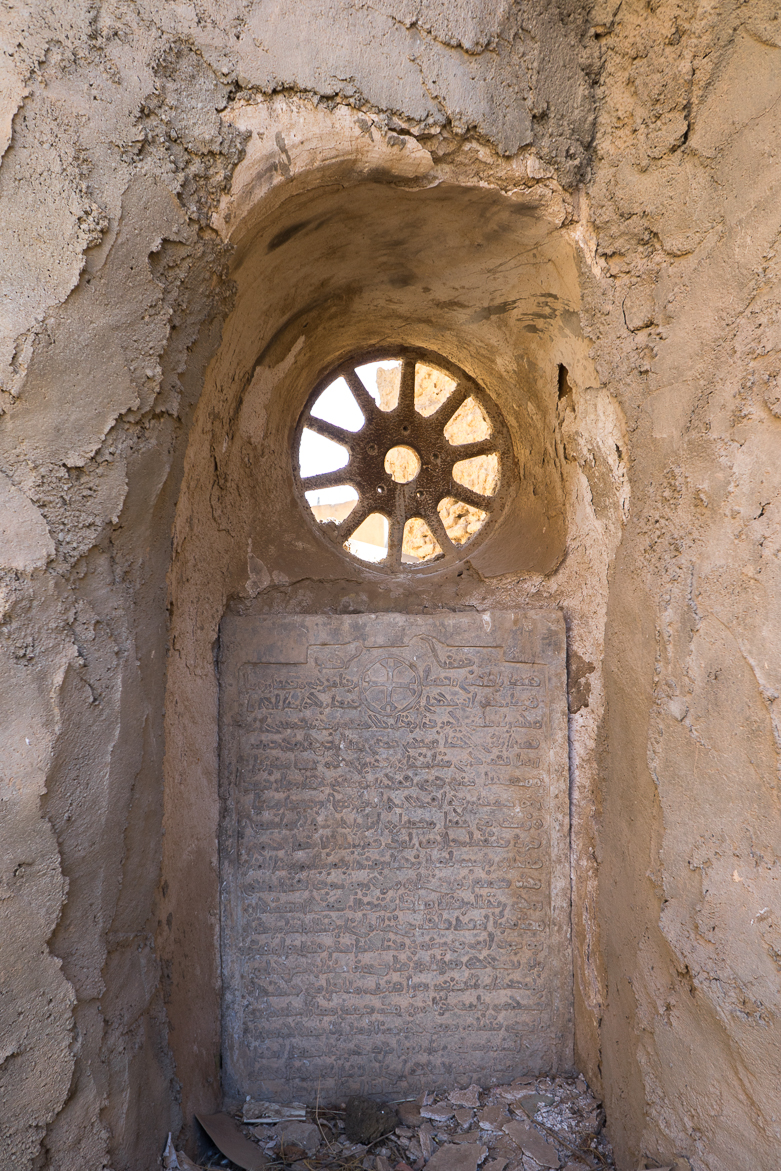
June 2017 © Pascal Maguesyan / MESOPOTAMIA
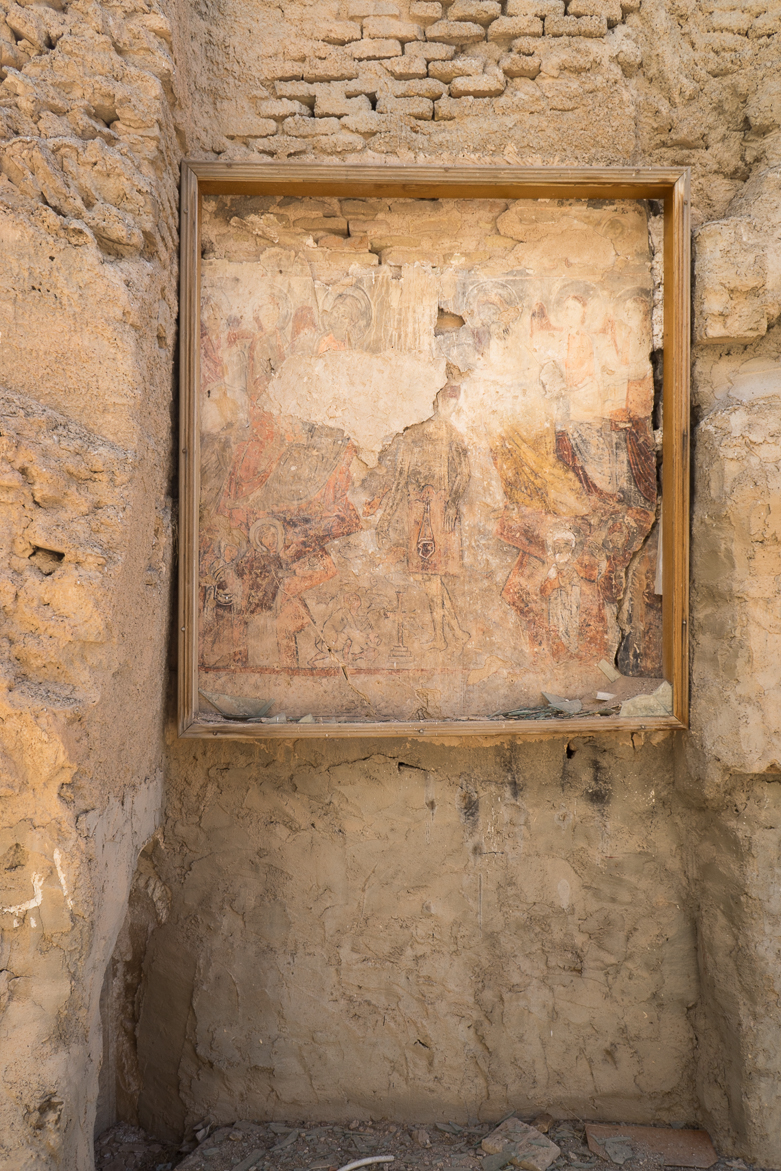
June 2017 © Pascal Maguesyan / MESOPOTAMIA
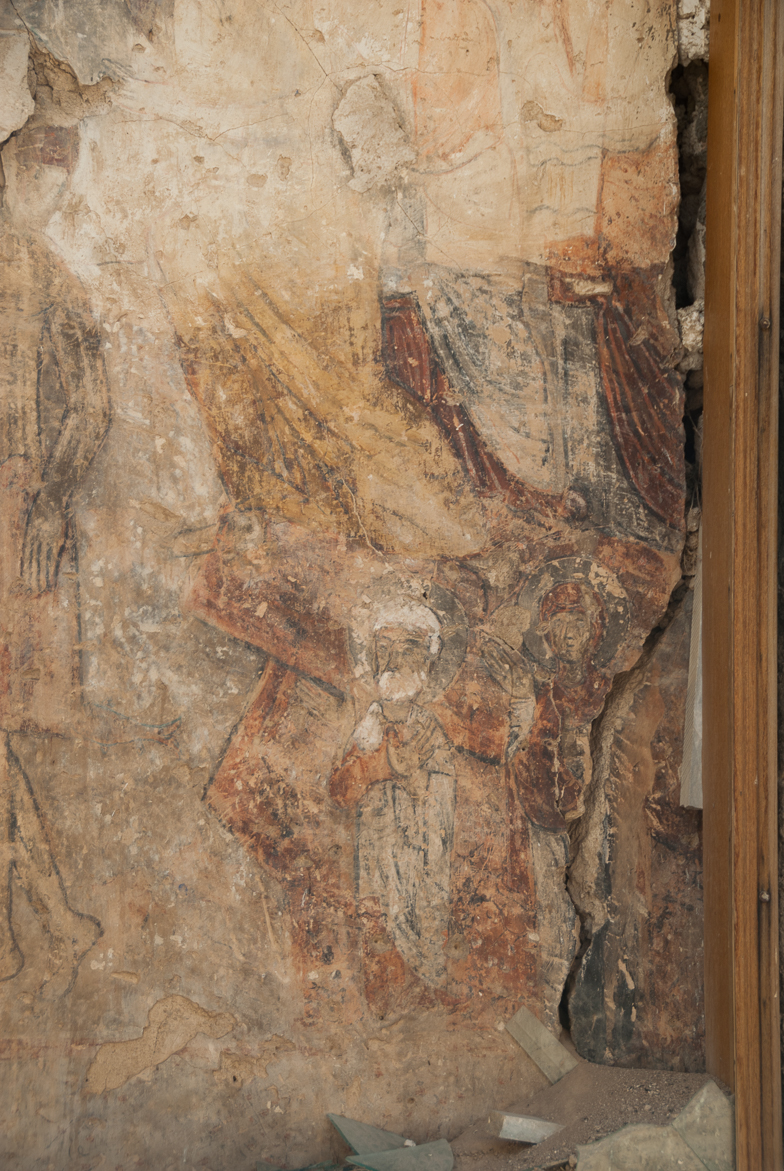
June 2017 © Pascal Maguesyan / MESOPOTAMIA
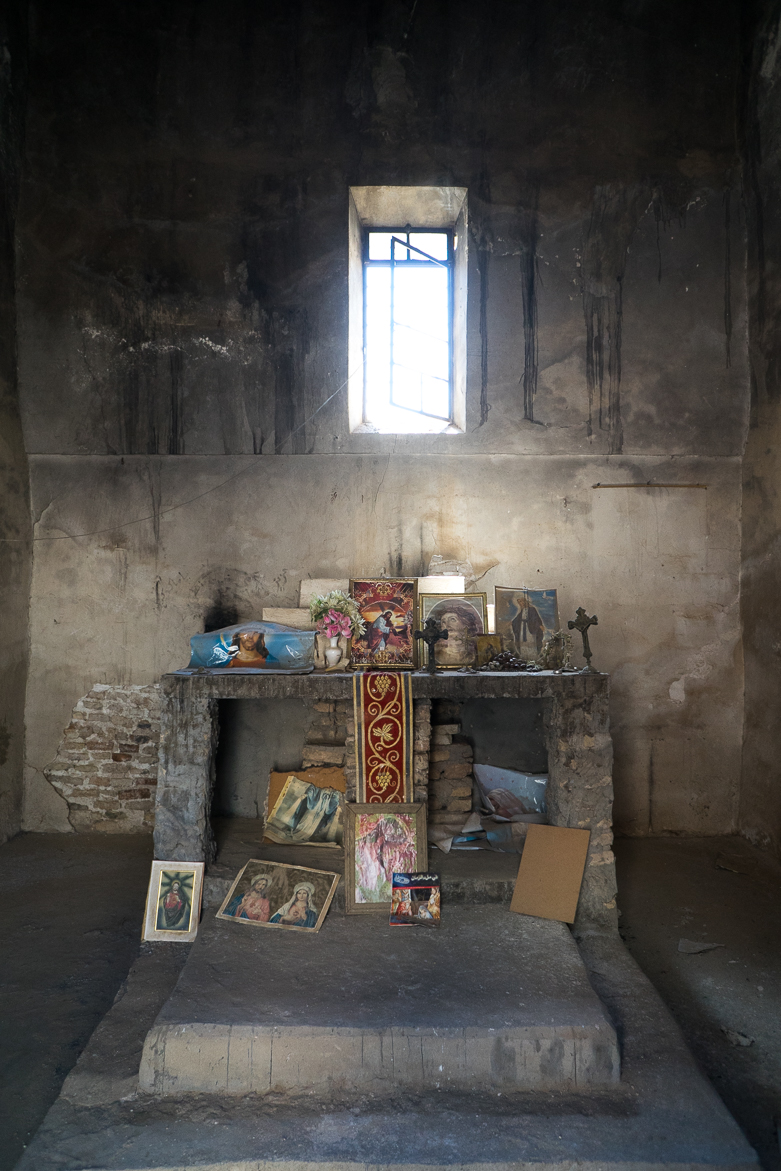
June 2017 © Pascal Maguesyan / MESOPOTAMIA
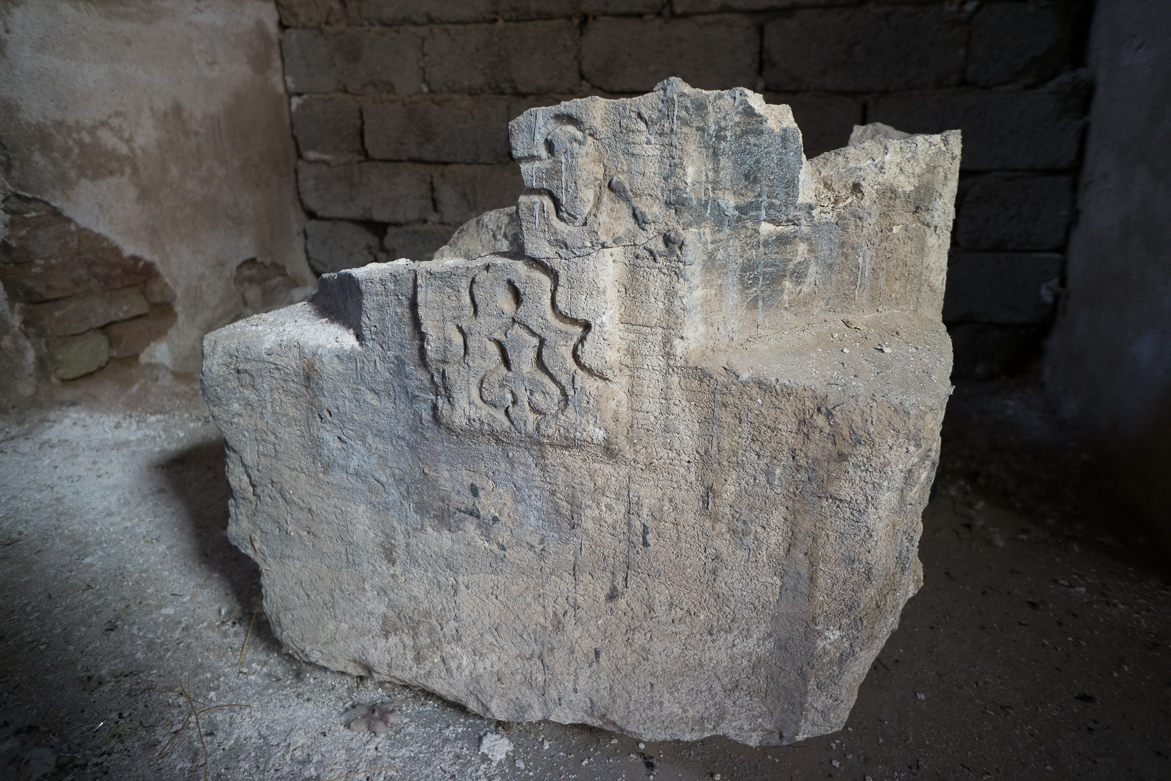
June 2017 © Pascal Maguesyan / MESOPOTAMIA
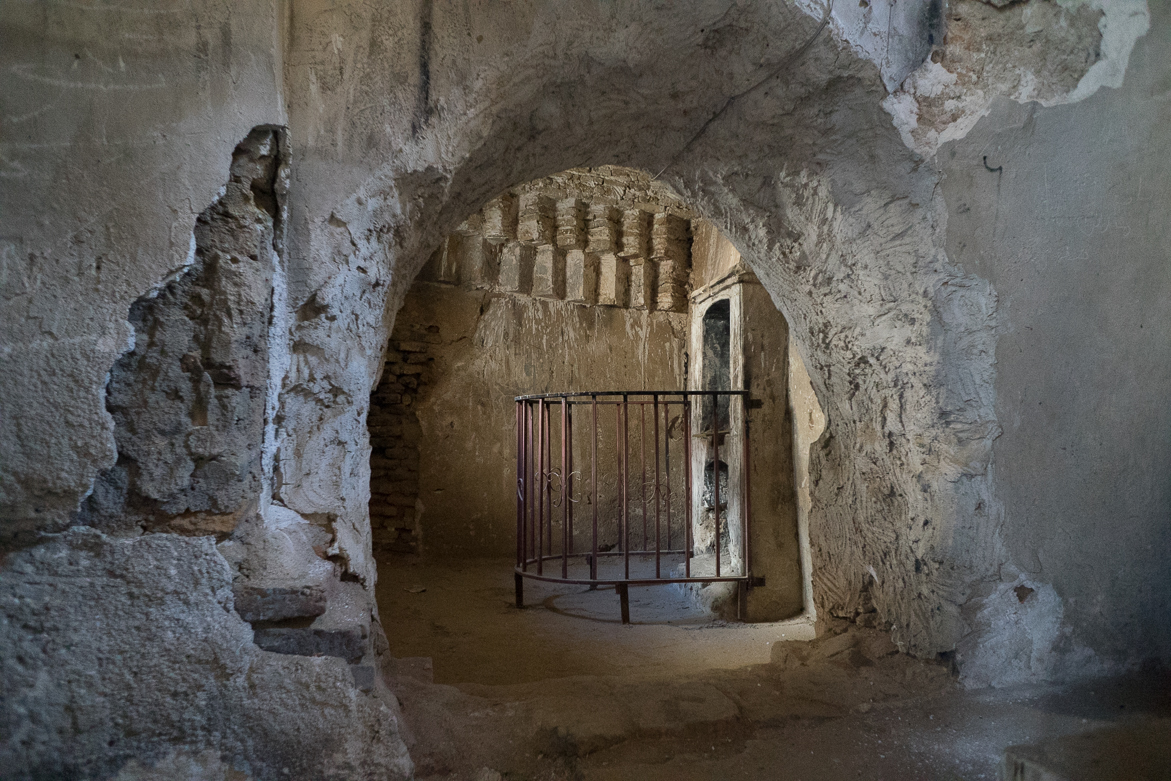
June 2017 © Pascal Maguesyan / MESOPOTAMIA

June 2017 © Pascal Maguesyan / MESOPOTAMIA

June 2017 © Pascal Maguesyan / MESOPOTAMIA

June 2017 © Pascal Maguesyan / MESOPOTAMIA

June 2017 © Pascal Maguesyan / MESOPOTAMIA

June 2017 © Pascal Maguesyan / MESOPOTAMIA

June 2017 © Pascal Maguesyan / MESOPOTAMIA

June 2017 © Pascal Maguesyan / MESOPOTAMIA

June 2017 © Pascal Maguesyan / MESOPOTAMIA

June 2017 © Pascal Maguesyan / MESOPOTAMIA
The ancient Mar Gorgis, the modern Mar Gorgis
The Syriac-Orthodox Mar Gorgis church in Baghdede (Qaraqosh) is made of two churches, the ancient and the modern church. The first one is undersized and rupestrian. The second one is massive and surmounted by tiered iron domes.
Whereas the first one stands there as a testimony of bygone days, the second one is an ode to modernity. Both are however very close to one another, almost attached to each other, as if they were bridging the gap between the past and the present.
Those two constructions are the spiritual centre of a religious complex, completed with several functional buildings and circled by a wall.
In the church’s garden, which used to host a cemetery, stands a big cement statue of Saint George (Mar Gorgis), riding a horse and slaying the dragon. The protective saint’s sculpture represented such a common and symbolic figure of the Christian East, that the jihadist attackers beheaded it.
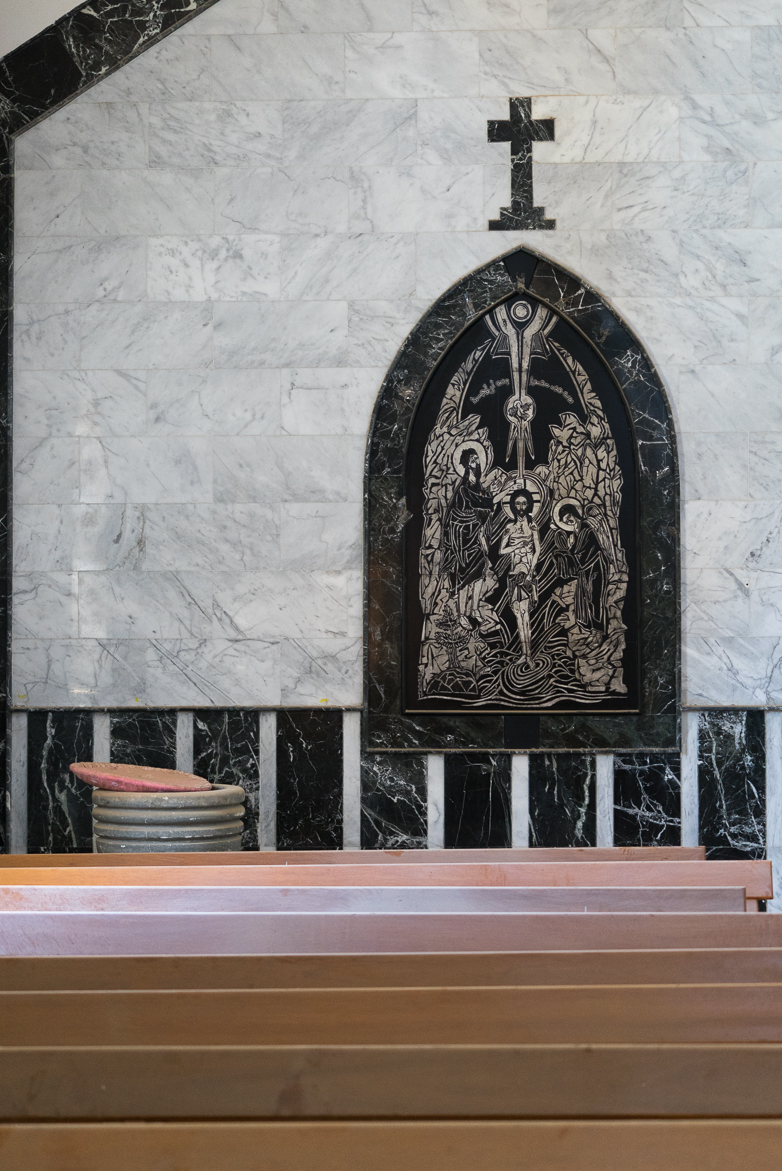
June 2017 © Pascal Maguesyan / MESOPOTAMIA
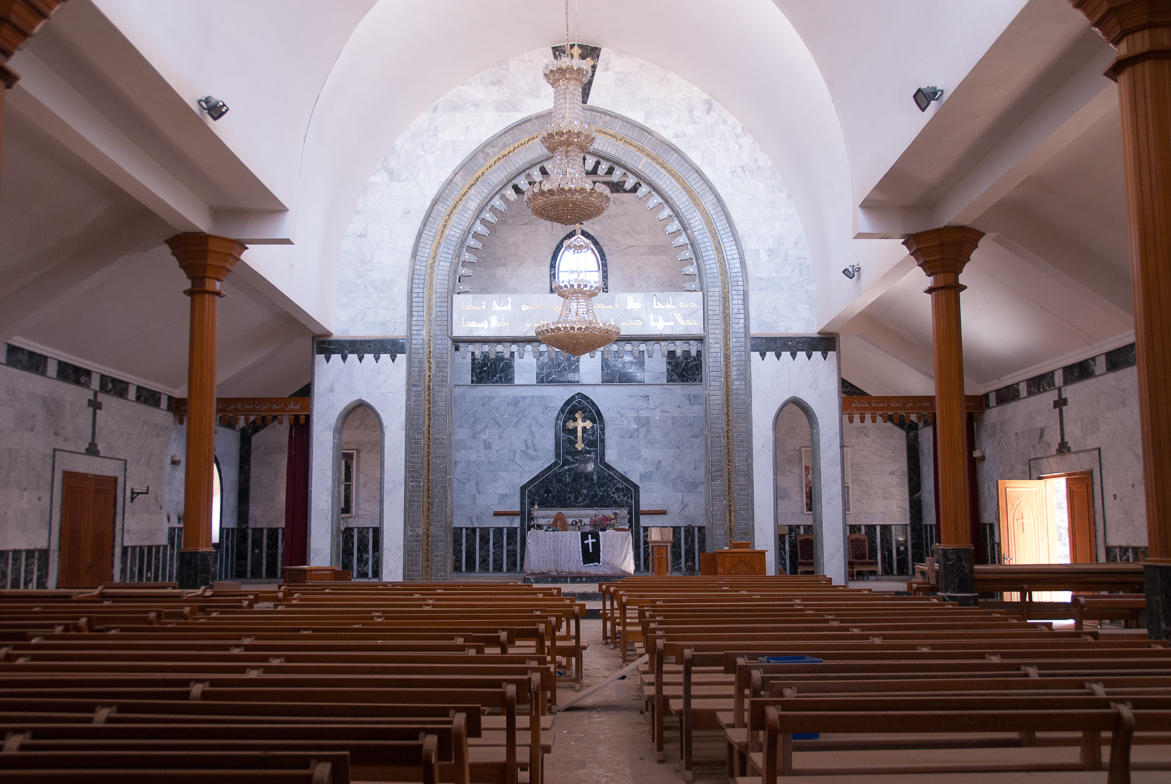
June 2017 © Pascal Maguesyan / MESOPOTAMIA
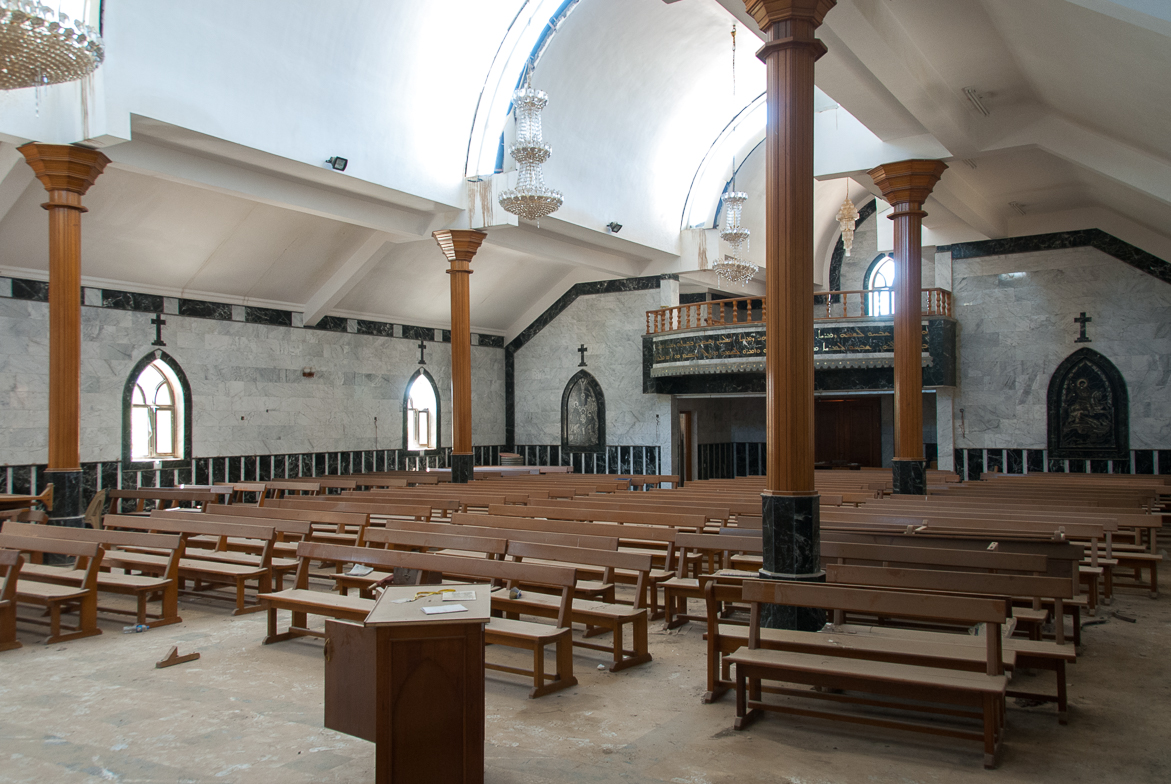
June 2017 © Pascal Maguesyan / MESOPOTAMIA

June 2017 © Pascal Maguesyan / MESOPOTAMIA

June 2017 © Pascal Maguesyan / MESOPOTAMIA

June 2017 © Pascal Maguesyan / MESOPOTAMIA

June 2017 © Pascal Maguesyan / MESOPOTAMIA
News
No doubt that Mar Gorgis, throughout its heritage history, had to endure numbers of belligerent armies that endlessly attacked Baghdede. Besides the unfortunately regular destructions and profanations, the last attack has turned the religious monastery into a bomb and explosive device factory. The church also suffered war damages when Baghdede was liberated in October 2016. Therein, the bell tower showing the entrance of the domain has been bombed and is now much devastated. Its skeleton, which can be seen from a distance, stands as a proof of the outrages the Christian heritage of the town has endured.
The Syriac-Orthodox people were not so many in Baghdede. The exodus in 2014 made their number drop drastically. However, the worshippers cleaned up 3 years of dust from the church. The inside part is fortunately quite preserved, and this allows the believers to come back there and keep on praying.
The former Syriac-Orthodox church of Mar Guorguis in Baghdede (Qaraqosh) is in the same situation as it was after the liberation (only it has been well cleansed).
The new Syriac-Orthodox church Mar Guorguis in Baghdede (Qaraqosh) has been well cleaned and restored. The roof has been renovated, the dome has been completely repainted. The surroundings outside the church (courtyard and garden) were also cleaned and restored.
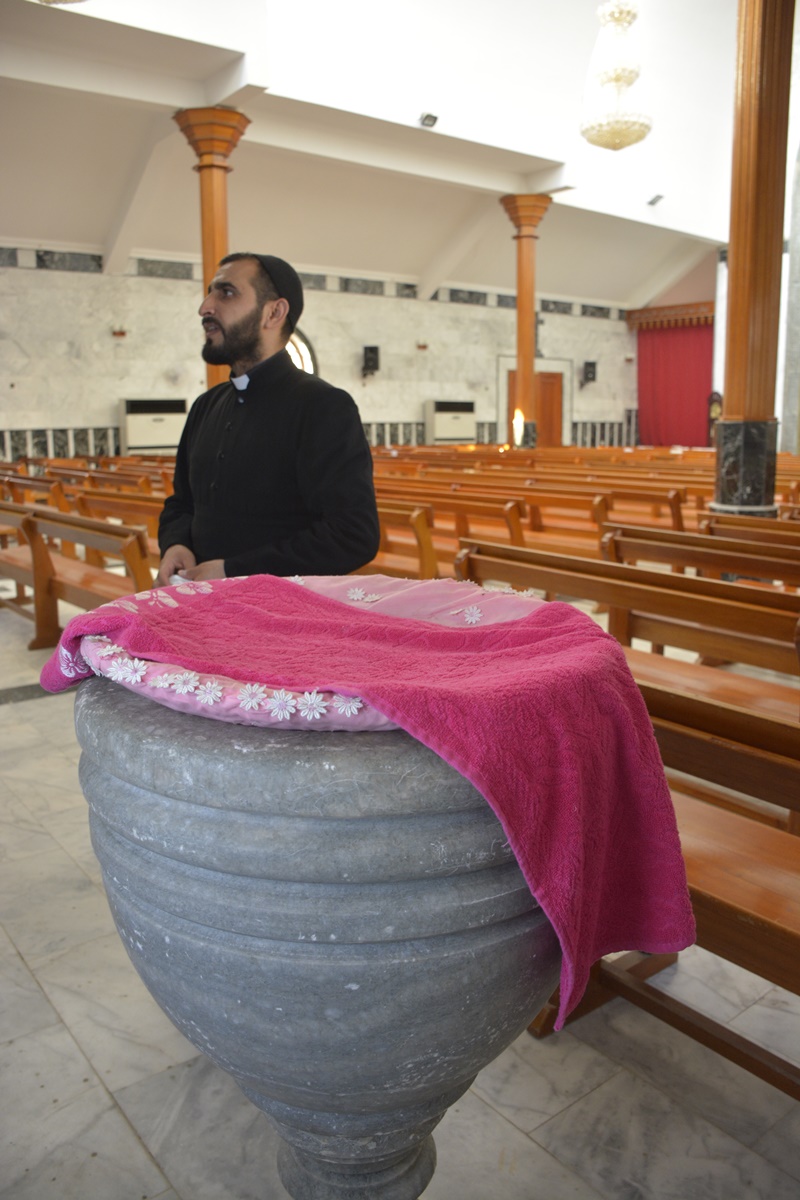
July 2019 Ibrahim Lallo & Matty Al Mache/ MESOPOTAMIA
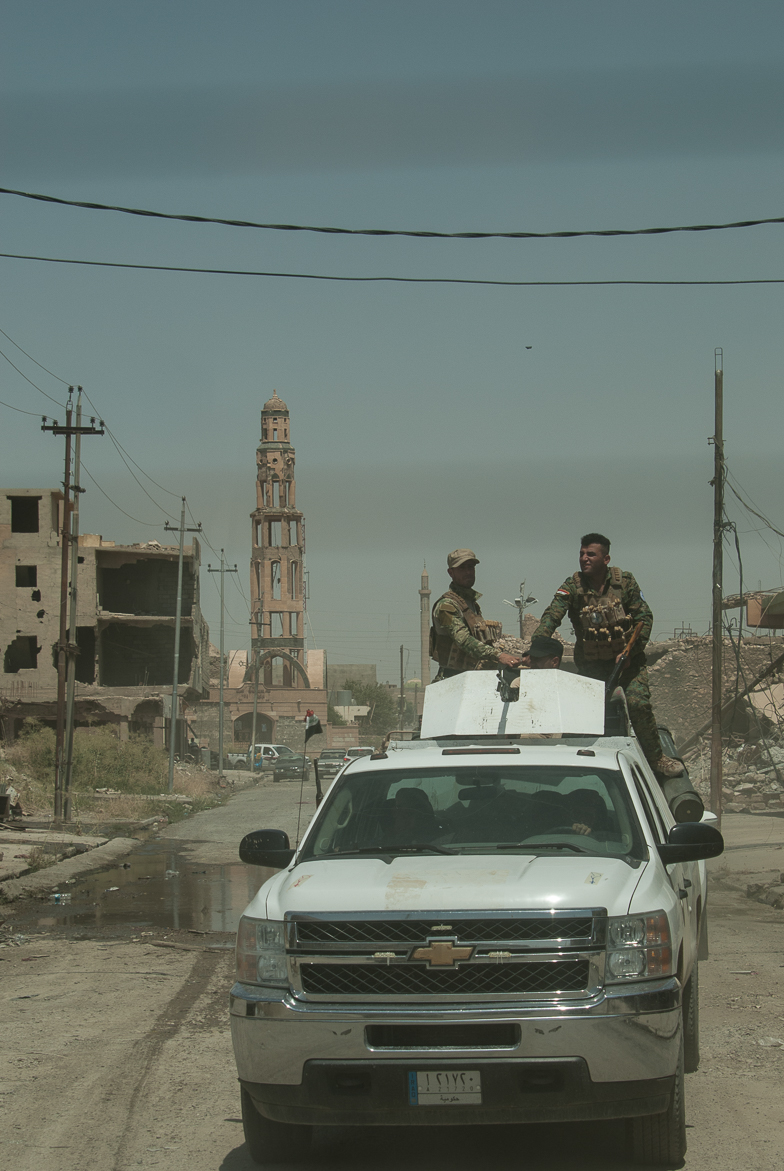
July 2017 © Pascal Maguesyan / MESOPOTAMIA
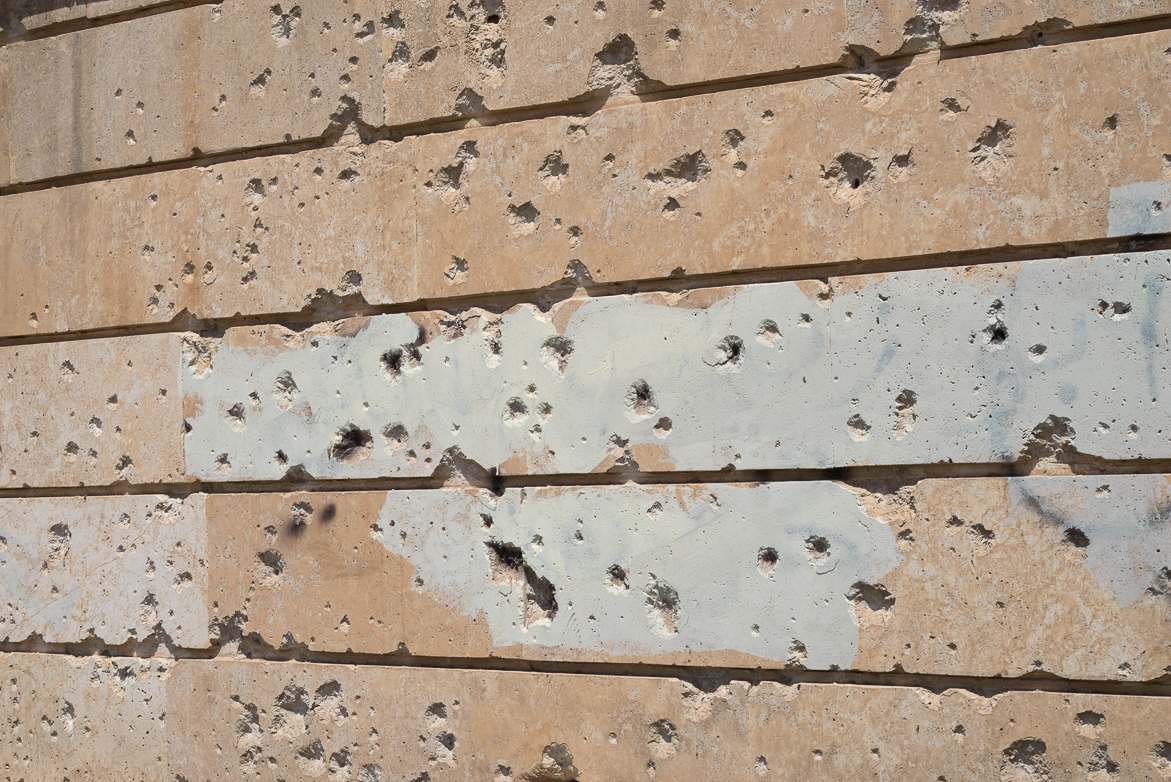
June 2017 © Pascal Maguesyan / MESOPOTAMIA
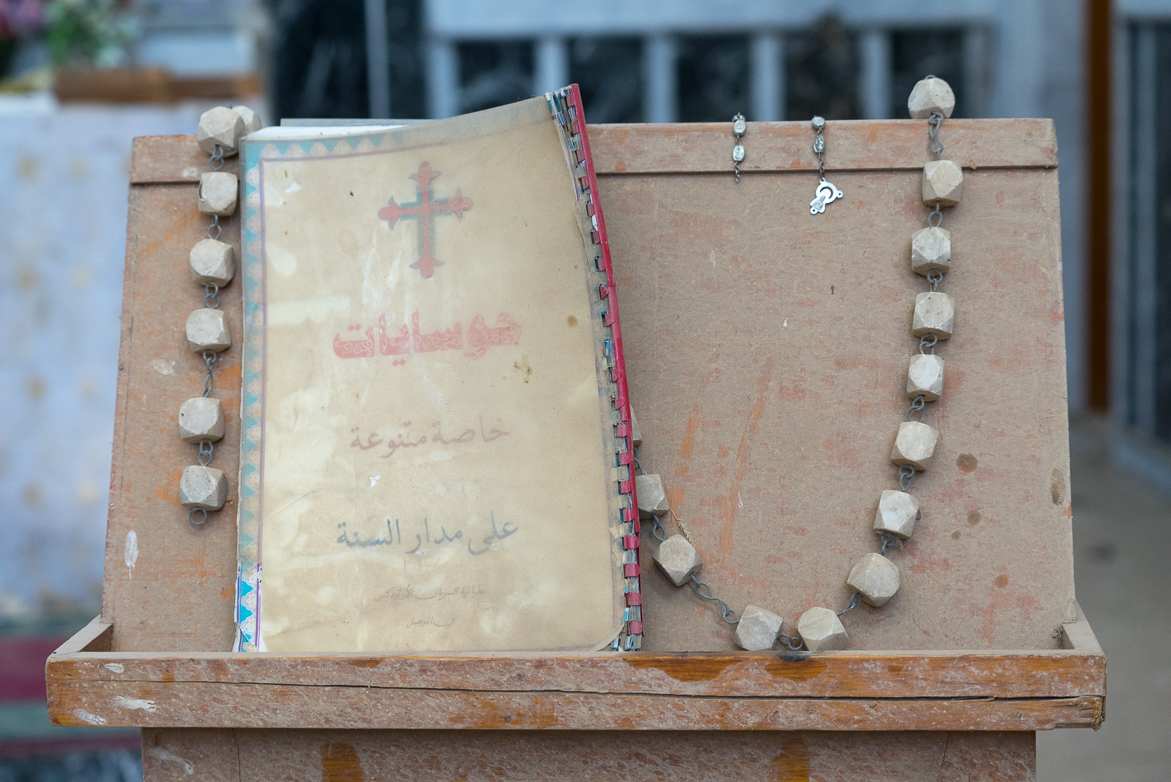
June 2017 © Pascal Maguesyan / MESOPOTAMIA
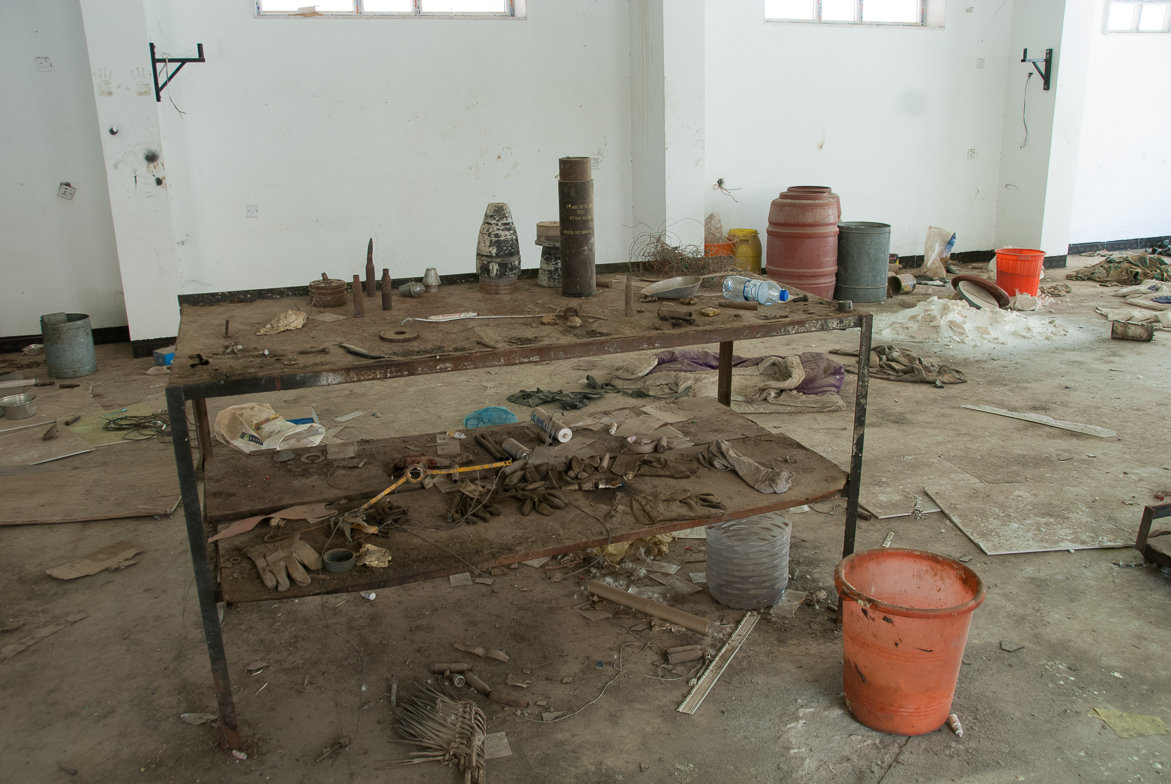
June 2017 © Pascal Maguesyan / MESOPOTAMIA
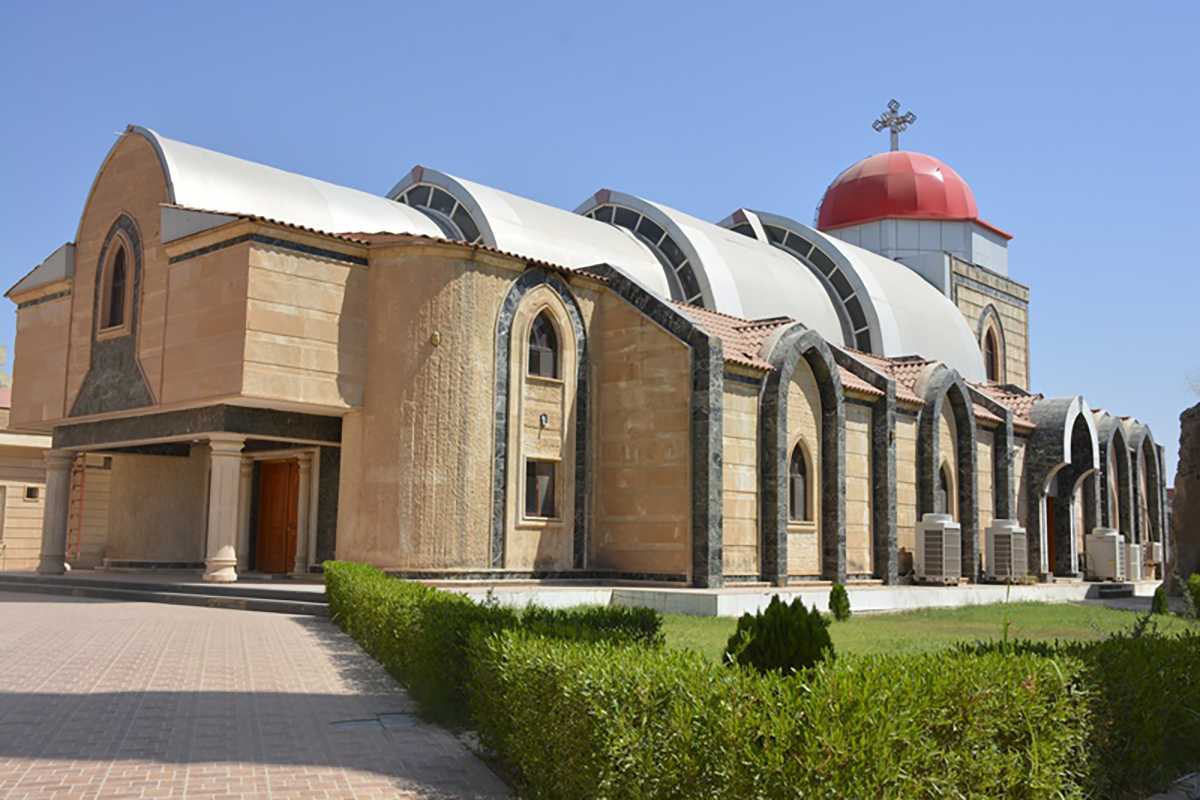
July 2019 Ibrahim Lallo & Matty Al Mache/ MESOPOTAMIA
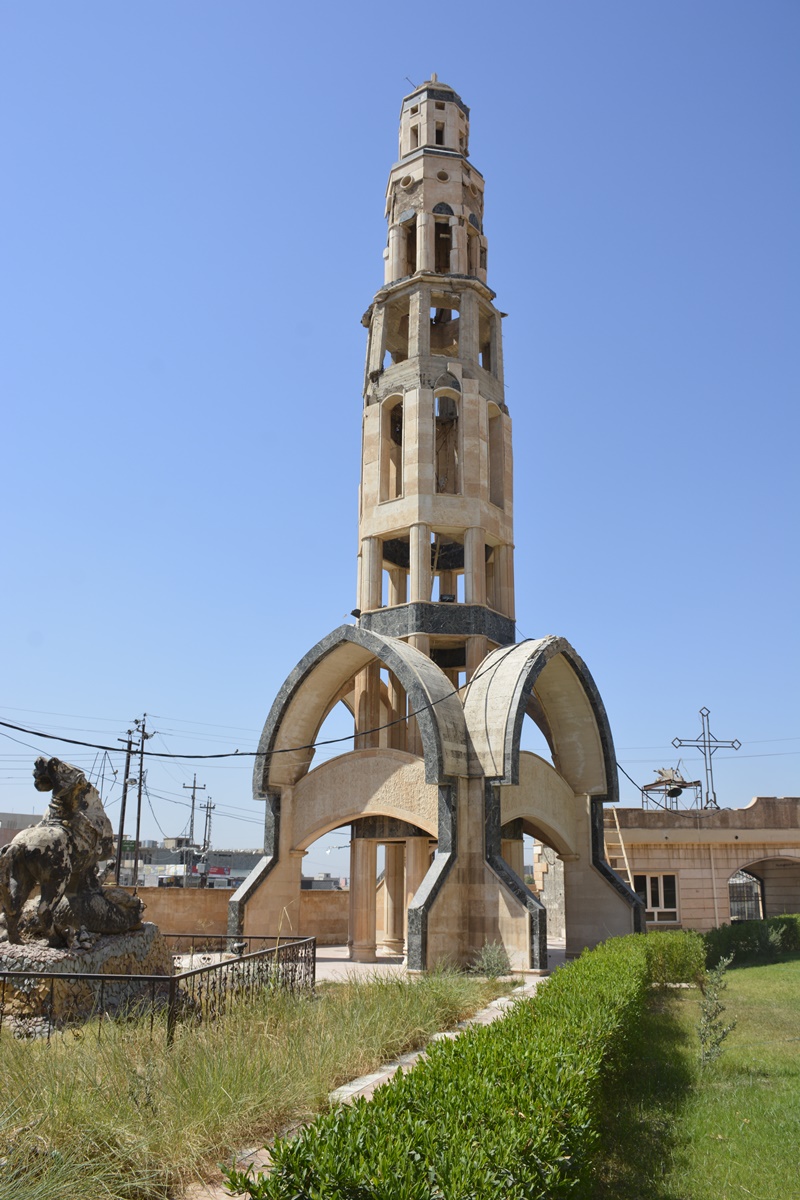
July 2019 Ibrahim Lallo & Matty Al Mache/ MESOPOTAMIA
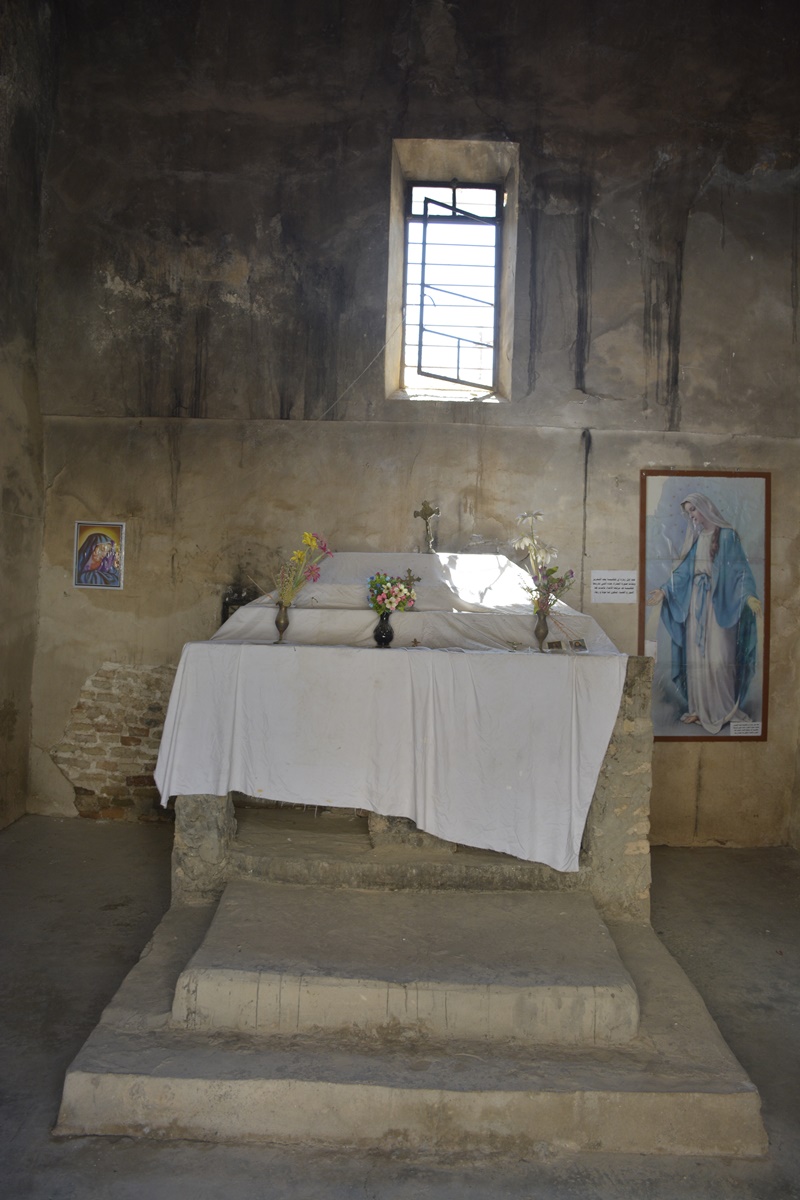
July 2019 Ibrahim Lallo & Matty Al Mache/ MESOPOTAMIA
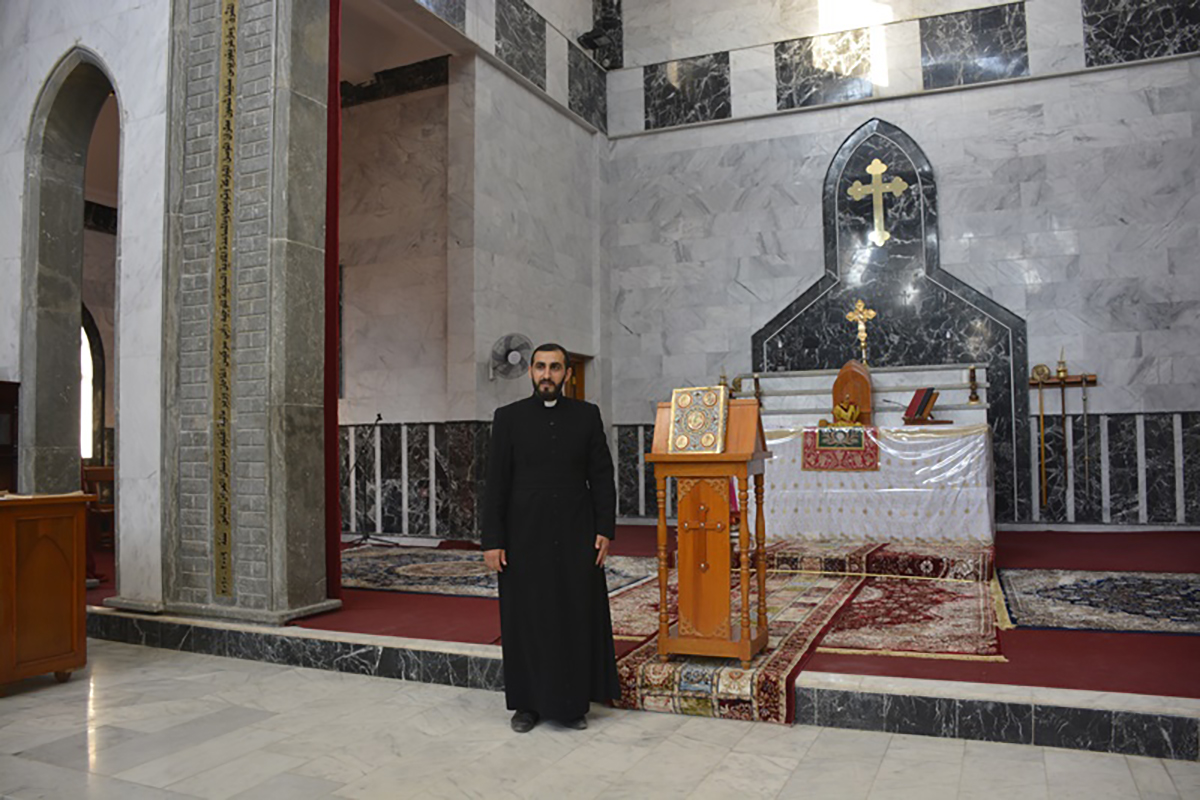
July 2019 Ibrahim Lallo & Matty Al Mache/ MESOPOTAMIA
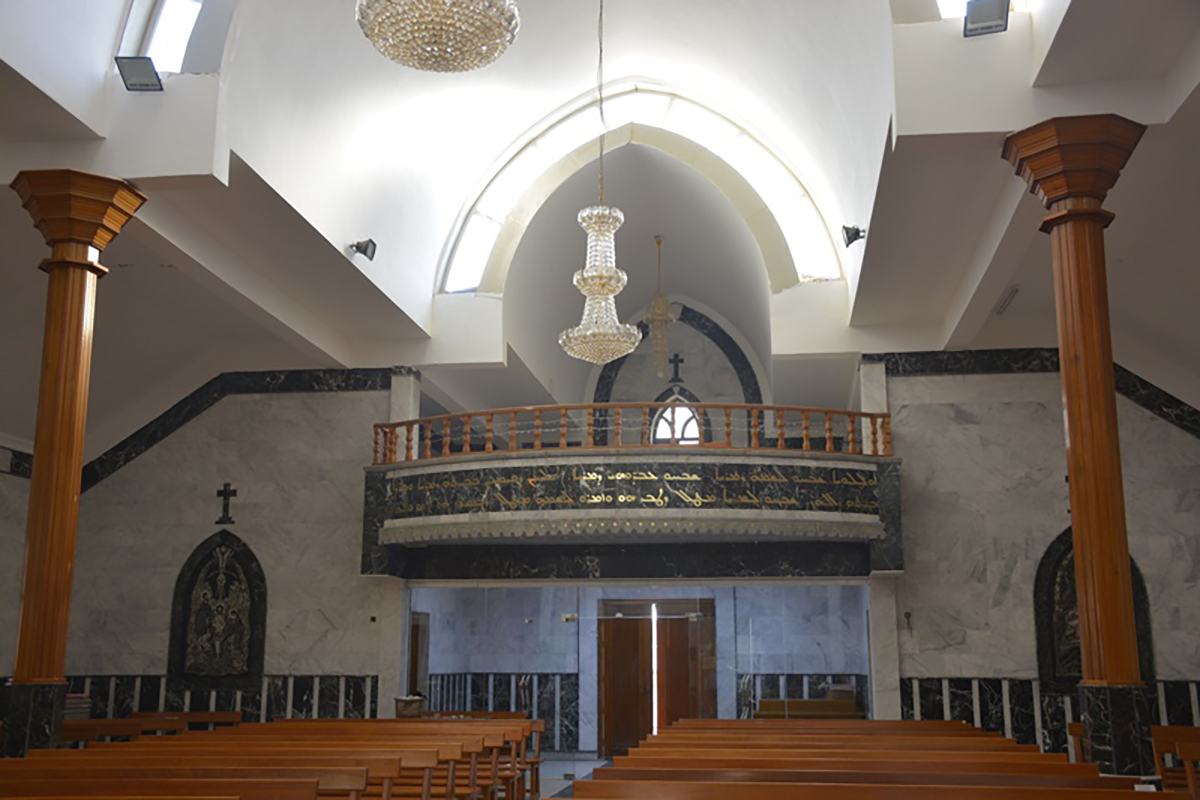
July 2019 Ibrahim Lallo & Matty Al Mache/ MESOPOTAMIA

July 2019 Ibrahim Lallo & Matty Al Mache/ MESOPOTAMIA

July 2017 © Pascal Maguesyan / MESOPOTAMIA

June 2017 © Pascal Maguesyan / MESOPOTAMIA

June 2017 © Pascal Maguesyan / MESOPOTAMIA

June 2017 © Pascal Maguesyan / MESOPOTAMIA

July 2019 Ibrahim Lallo & Matty Al Mache/ MESOPOTAMIA

July 2019 Ibrahim Lallo & Matty Al Mache/ MESOPOTAMIA

July 2019 Ibrahim Lallo & Matty Al Mache/ MESOPOTAMIA

July 2019 Ibrahim Lallo & Matty Al Mache/ MESOPOTAMIA

July 2019 Ibrahim Lallo & Matty Al Mache/ MESOPOTAMIA

July 2019 Ibrahim Lallo & Matty Al Mache/ MESOPOTAMIA
Monument's gallery
Help us preserve the monuments' memory
Family pictures, videos, records, share your documents to make the site live!
I contribute